Sponsored by Allianz Travel
Rome is called the Eternal City for a reason. Walk along the cobblestones covered in hanging vines, with people spilling out on the sidewalk drinking Aperol Spritz and eating gelato, then turn a corner, and there’s a 2000-year-old crumbling ruin saying “Hey, Remember me?”
It has to be one of the most captivating cities in the world – not one where ancient history is all they have left to give you, but a place full of vibrant modernity, too.
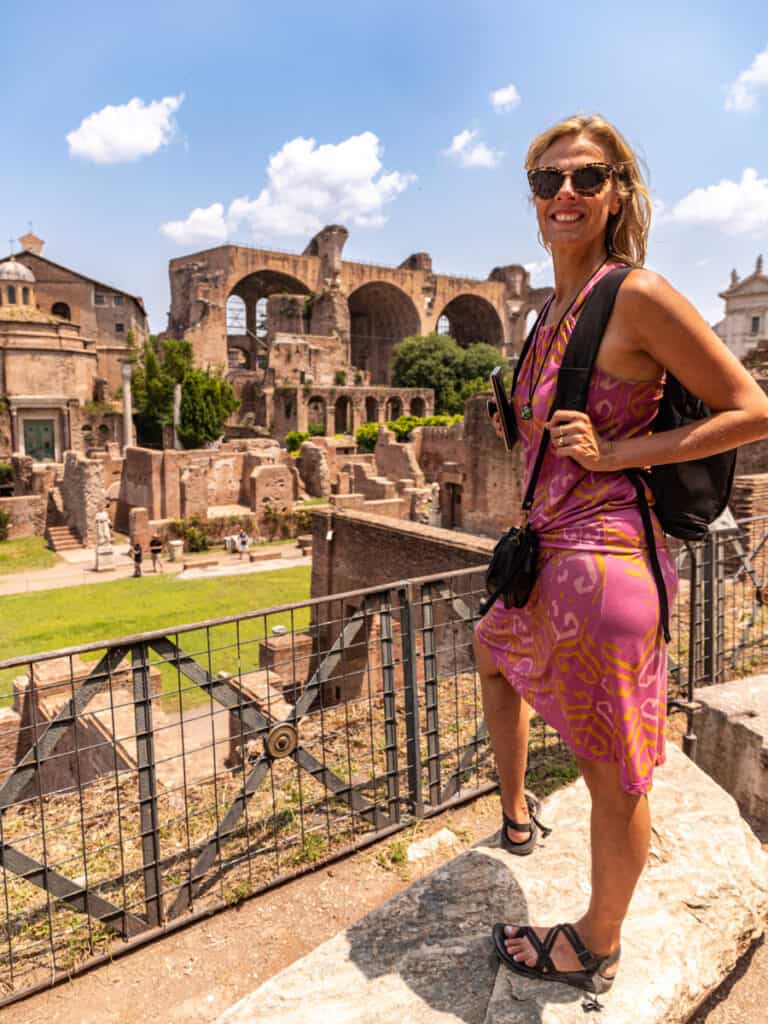
But Rome is also the most visited city in the world, and sees 5.8 million tourists a year, which means you’re going to need to go prepared if you want to enjoy your experience.
In this guide, we’ve listed all the top things you need to know before traveling to Rome. Allow us to share with you the most essential things to know before going to Rome. From local customs to money saving tips, best places to stay and where to find the best gelato in Rome, we’ve got you covered!
Some of these tips for Rome, are also tips you can follow in Italy.

As soon as I saw my teen daughters holding up their phone to snap pictures every couple of steps upon arrival in Trastevere, I knew we’d made the right choice adding Rome to our summer Europe trip.
But the wrong choice was not staying longer. Three days just wasn’t enough! If I was go go back again, I would allow five days to be able to fit everything in at a more leisurely pace.
Before we start, we want to thank our long-term partner, Allianz Travel Insurance for sponsoring this content. They help us help you by providing us the resources to create this helpful content.
Things To Know Before Going to Rome
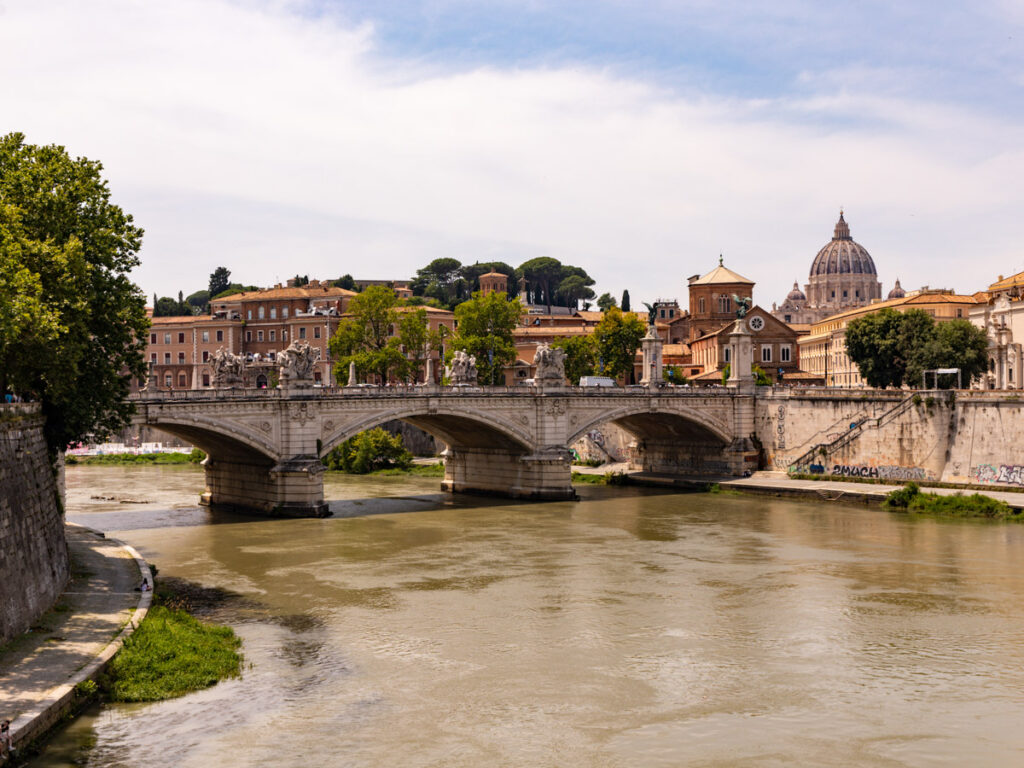
Before you start wandering past its marble masterpieces, arm yourself with wisdom from the ages to ensure your visit to Rome is a smooth and unforgettable one.
Put another notch in your belt, dust off your ancient history books, and join us as we embark on a journey to uncover the secrets of planning an unforgettable trip to Rome! Starting with the most important thing…
1. Get Travel Insurance: Allianz Travel Vacation Confidence Index
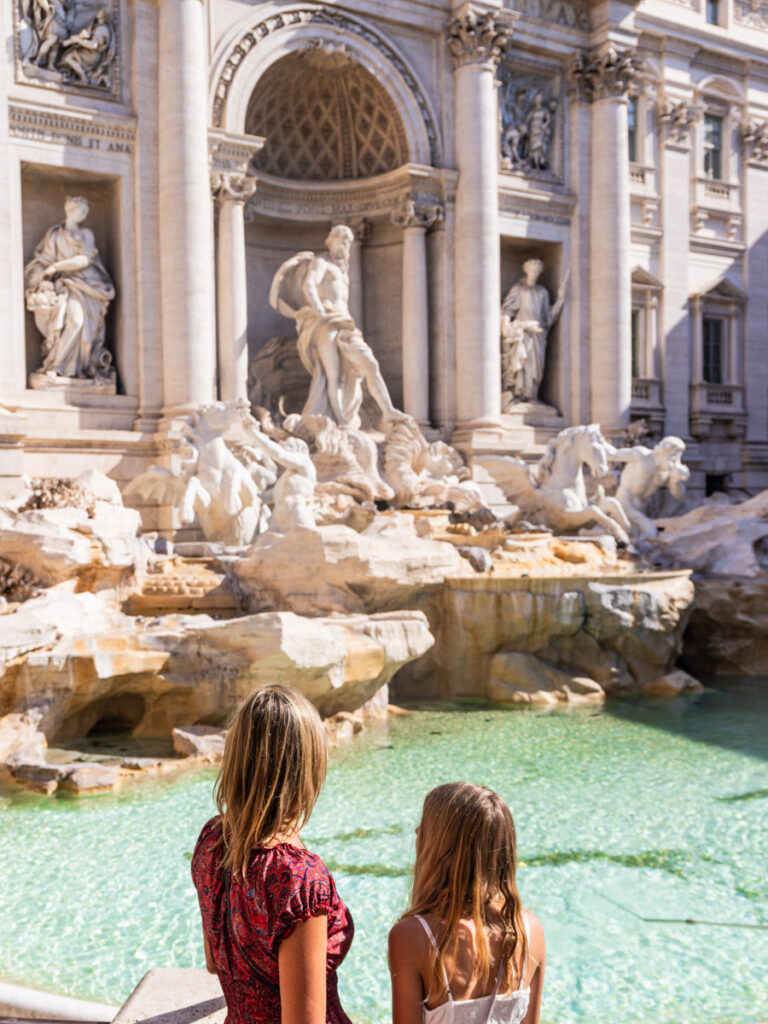
We wouldn’t recommend traveling to Rome without travel insurance. It will give you peace of mind should something go wrong, like trip delays and cancellations and unforeseen events, your investment is protected and some of those unplanned costs may be covered.
They have a travel insurance policy to suit all kinds of travelers and needs. As we’re frequent family travelers, we have an annual travel insurance policy. Several of their policies cover children under 17 for free.
You may also be interested in the results from their annual Vacation Confidence Index which reports on American travel trends such as share economy, travel styles, and annual summer vacation spending.
What was interesting to me this year is spending is up, people are using the share economy less (us included) and pay-cations, solo travel, wellness travel and pet travel are all on the rise (check yes for all of them for us!)
Perhaps that may be one of the reasons why you’re planning to travel to Rome!
(Although we do recommend vacation rentals for Rome!)
2. Know How to Get to Rome from the Airport
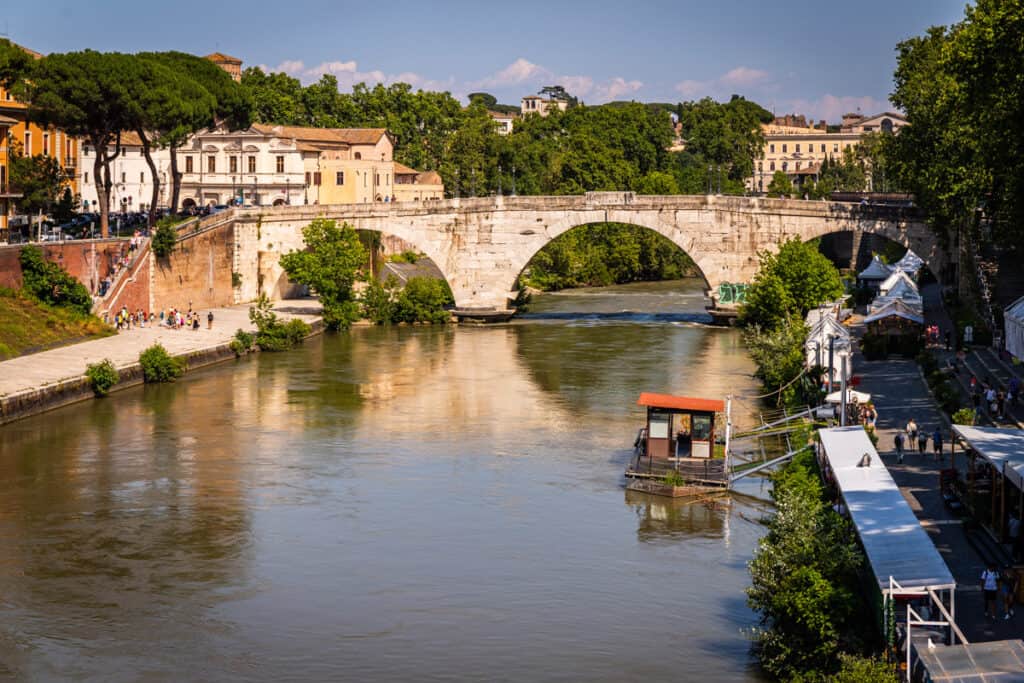
To get to Rome, there are several travel options depending on your starting point.
If you are coming from abroad, the most common way is to fly to Rome’s Leonardo da Vinci-Fiumicino Airport (FCO), which serves as a major international gateway.
Numerous airlines offer direct flights to Fiumicino from various cities around the world.
Once you arrive at the airport, you can take a taxi or use the convenient train connections to reach the city center.
We found out after we arrived that taxis from the airport are a fixed rate of €50. We had already organized a private transfer with our apartment rental for €60 so it was a small €10 mistake.
If you are a family with older kids, it will be better to take a taxi into Rome city center than pay for all of you on the train. About the same price, but more convenient and typically faster, if not the same time.
The Leonardo Express is a dedicated non-stop 30 min train service between Fiumicino Airport and Roma Termini, One-way tickets cost €14. Kids under 4 are free and children 4-12 are free with every paying adult.
3. Getting to Rome by Train Is Easy
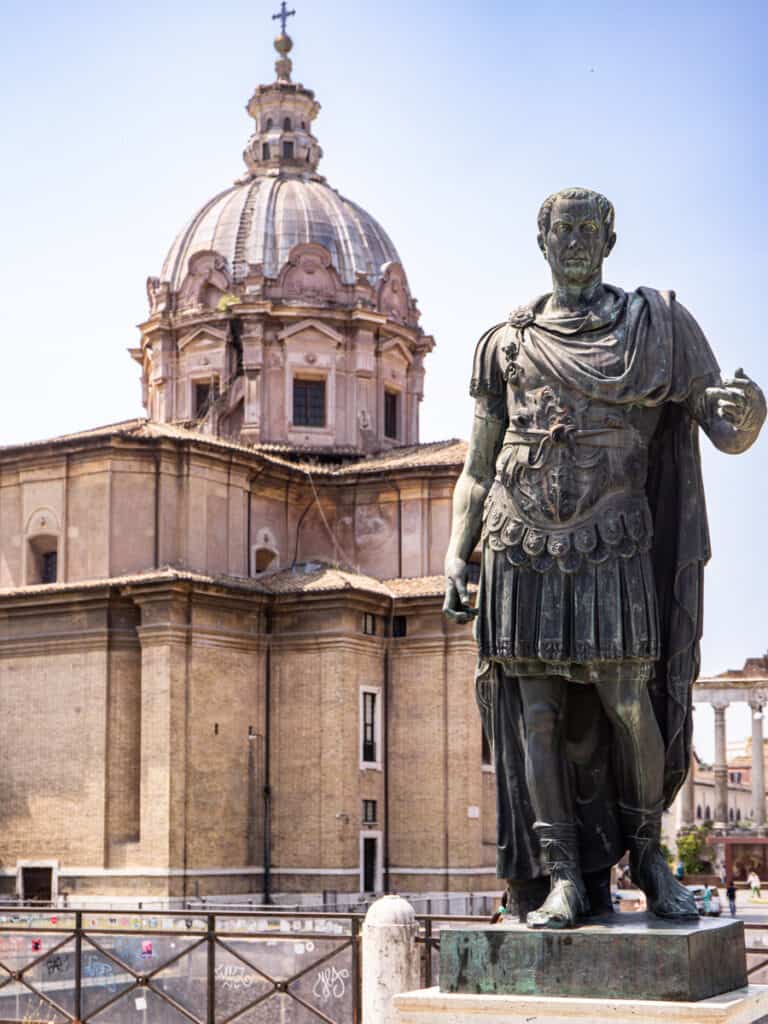
If you are already in Europe or other parts of Italy, you can opt for train travel, as Rome is well-connected to many major European cities by an extensive rail network.
Rome’s Termini Station is the central hub for national and international train services. Another option for nearby countries is bus travel, which offers a more affordable option but may take longer.
Check Omio, Trainline, or Rail Europe for train tickets. And Flixbus for bus tickets.
We only caught trains in Verona and Cinque Terre and were very impressed with their efficiency, cleanliness, and comfort.
4. Rome is Compact and Walkable
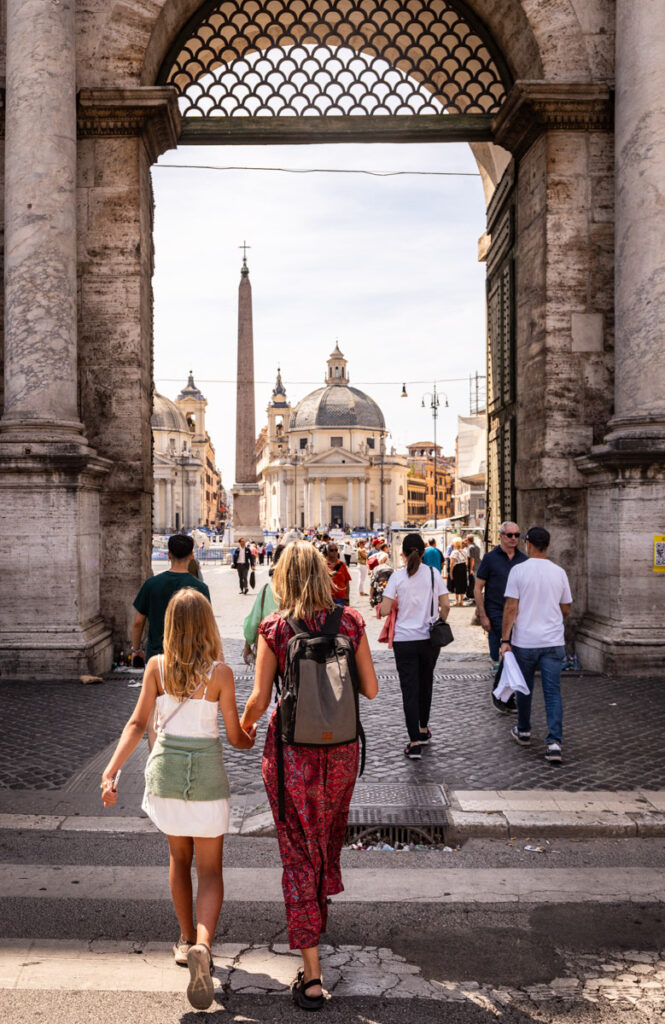
After arriving from Paris, which sprawled and had top attractions all over the city, Rome was a delight to explore on foot.
Most of the best things to do in Rome are located within its compact and walkable city center.
Many of the streets are also winding cobblestone alleys that cars can’t fit down and have ancient stories to tell with each turn. Plus, they are vibrant and filled with people spilling out on the sidewalks from bars and cafes or simply strolling around.
We only used public transport once – a taxi to get from our apartment to the train station with all our luggage.
We saved money, had a far more enjoyable Roman experience, and helped balance out all those Aperol Spritz!
5. Getting Around on Scooters and Bikes Is Popular
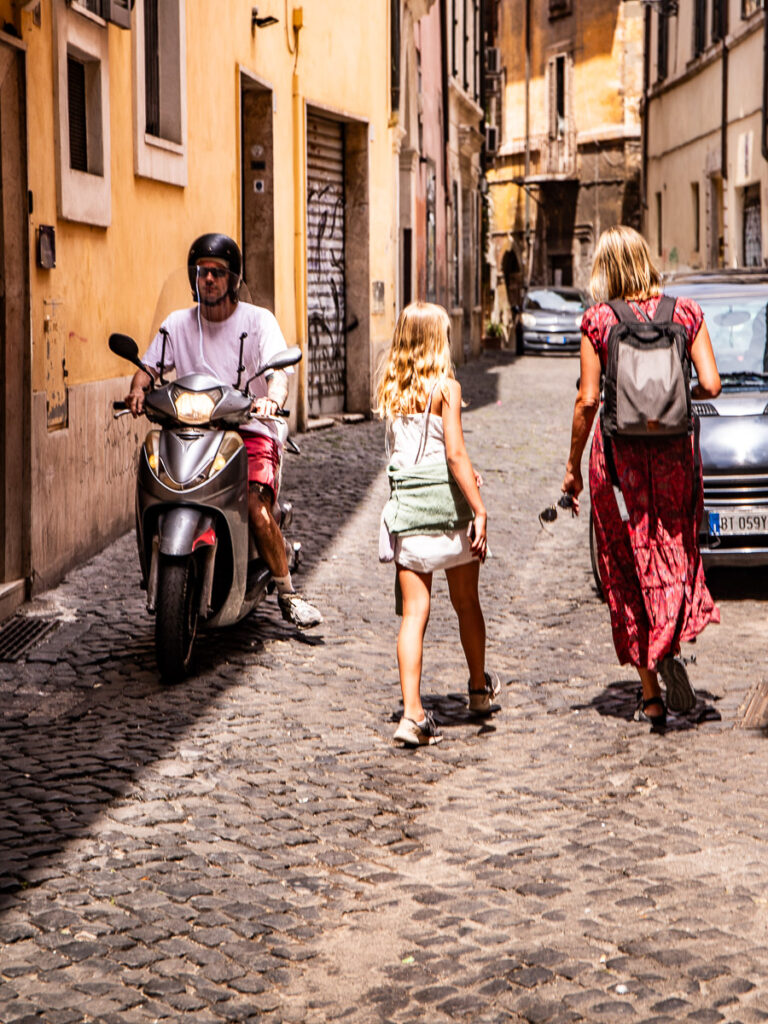
I mentioned how great it is to walk around in Rome. If you want to move faster, but stay in the open on the streets, then consider getting around on scooters, bikes, or vespas.
They can maneuver around the streets easily and are a common way of getting around. Pedestrians will want to pay careful attention to these scooters and bikes zipping around.
You can rent tour Vespas here or you may feel more comfortable joining a two-hour Vespa tour with a guide. I also really wanted our family to do the golf cart tour of Rome, but it didn’t align with our itinerary!
5. Public Transport in Rome Is Not Needed
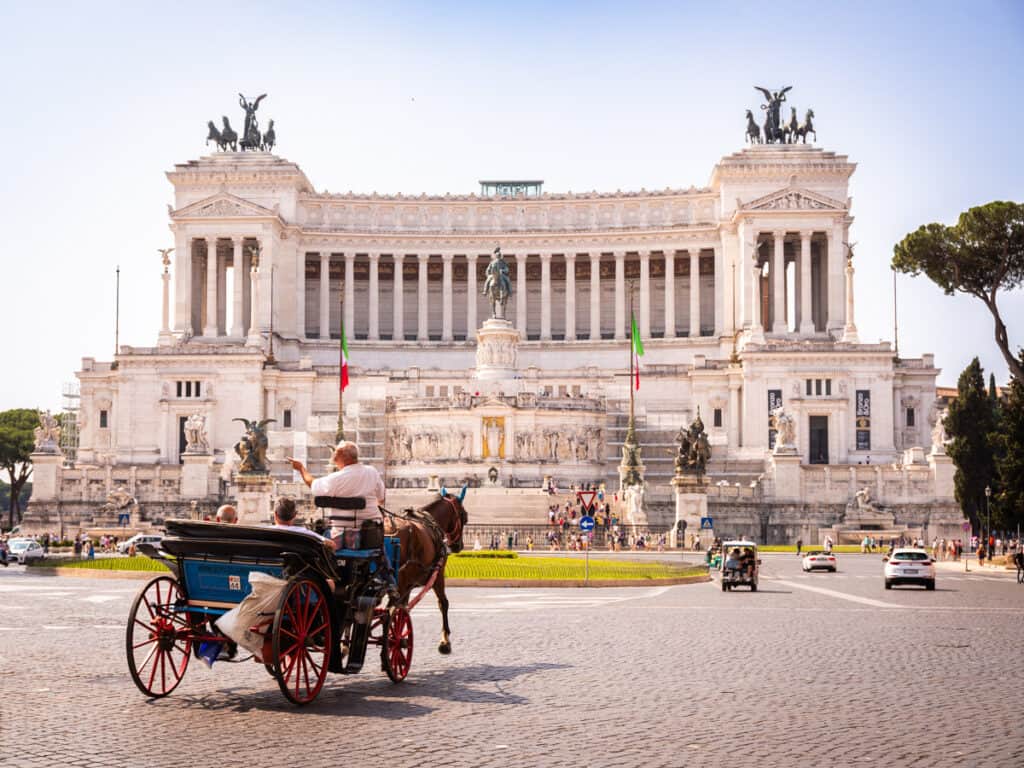
We did not need to use public transport in Rome. Our apartment manager said to avoid it if you can as it was currently a mess.
They haven’t recovered so well with managing the influx of tourists after COVID. She said buses rarely run on time and are really crowded.
If you’re staying in Rome central, I don’t think you’ll need to use the Metro of Rome, but it is there in case you’re tired and no longer want to walk. But it is the smallest metro system in Europe and only has three lines.
Apparently, expansion is difficult due to constant finding of more Roman ruins where proposed tunnels are built!!! Only in Rome.
The orange Line A is most convenient to major attractions, with Line B taking you to the Colosseum and Roman Forum.
One way tickets cost €1.50, and if you intend to use public transportation frequently you can buy travel cards at discounted prices.
Our apartment manager also said Uber is not as common and can be unreliable. With taxis you want to make sure they put the meter on, else they’ll try not to!
One thing I liked about the Uber app in Italy was the ability to book taxis through it. It was very efficient, and the cost was the same as its estimation in the app.
6. Make Sure To Explore the Rome Neighborhoods
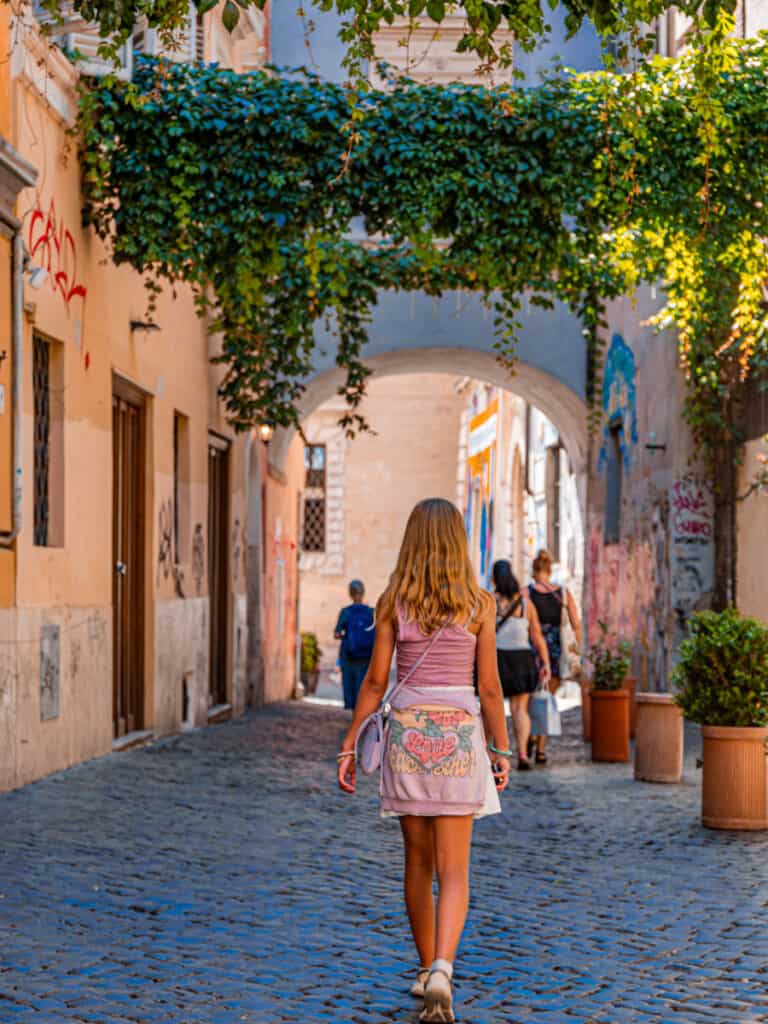
To enjoy a side to Rome that isn’t all about ancient ruins and the Catholic Church consider adding at least one of Rome’s neighborhoods to your itinerary. Several are within easy walking distance to the city center.
One of our favorite accommodation stays on our 4-week Europe trip was our apartment rental in Trastevere. It was spacious and within easy walking distance to everywhere and gave us that insight into local life we love to experience.
Trastevere was our favorite part of Rome. It’s an ancient working-class neighborhood, famous for its quaint, narrow alleyways and medieval houses, located in the southwest of the city across the Tiber River.
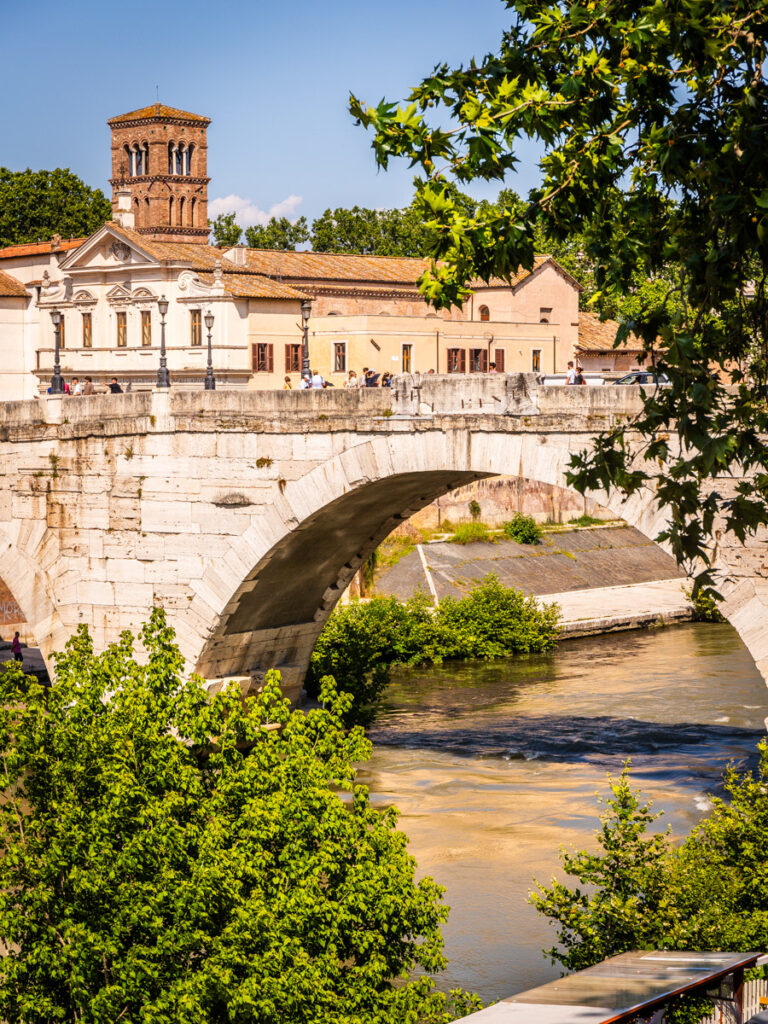
It’s where we found 90c espressos, €2.50 wines, live music in the square and on the streets, absolutely buzzing atmosphere – popular with the young backpacker crowd at night, but still suited to all ages – and our favorite restaurant in Italy – gluten-free Mama Eats.
As the manager of our apartment said, any restaurant in Trastevere is fantastic. “If you see a line, don’t bother waiting, just go to another one without a line, I will be good. It’s also cheaper than across the river.“
Another local neighborhood you may love, which we did not get a chance to visit is Testaccio, just south of the Colosseum. As it’s a little way out of the center, it’s much quieter, and you can find many great restaurants here. You can even take a food tour where you can learn about all the local delicacies.
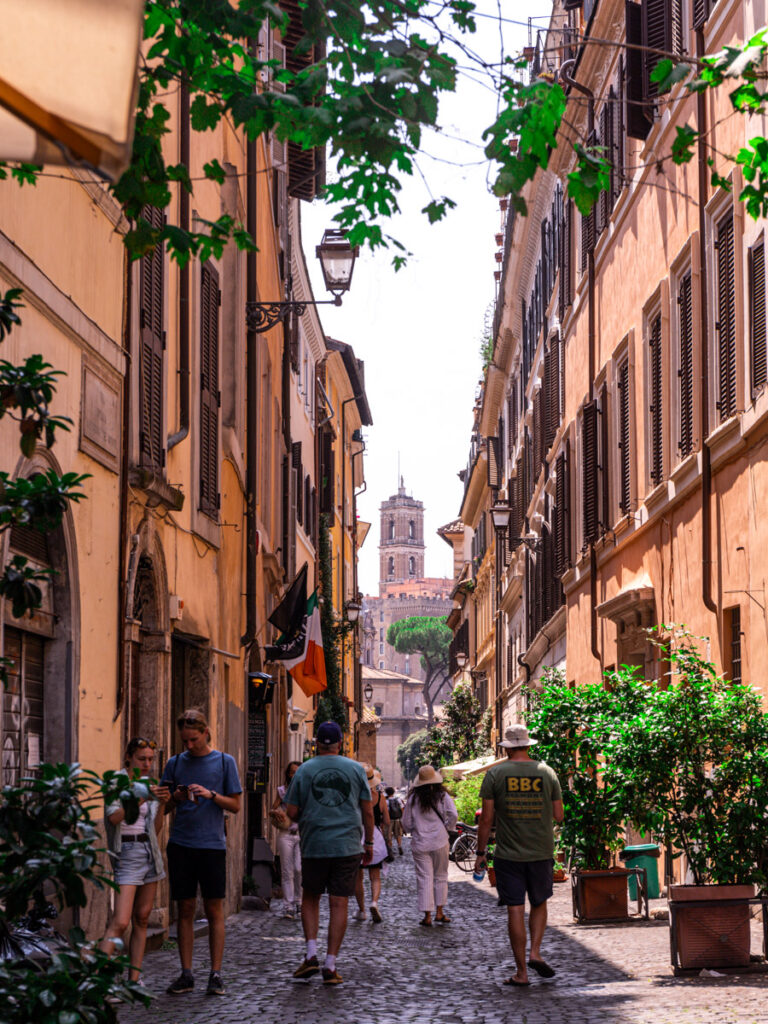
Monti is also a vibrant neighborhood in Rome filled with small cobblestone streets and restaurants. It’s just to the east of The Roman Forum and Colosseum on top of a hill (you’ll get some views.
We ate here after the Colosseum at a cute restaurant with great food at a reasonable price.)
7. Know the Best Time to Visit Rome
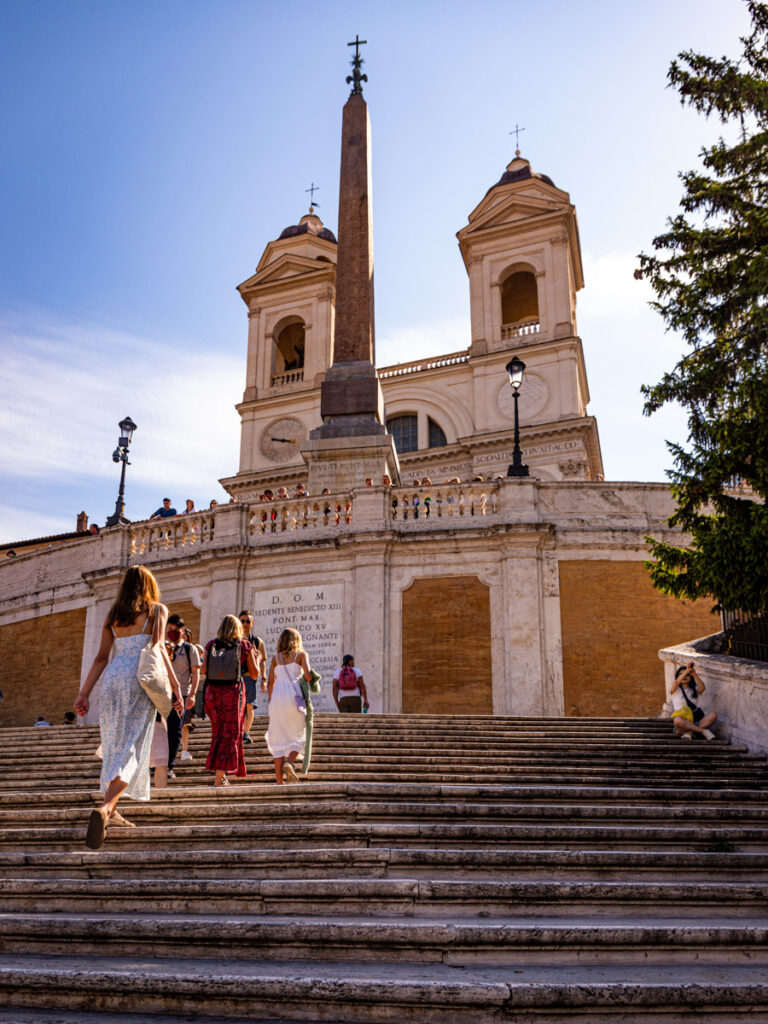
Rome is the second most visited city in Europe, so it will be busy, especially in the summer. Follow our Rome travel tips to help you navigate around the crowds, so you still have a great time.
We only found it traumatic visiting the Colosseum and the Vatican City. Otherwise, it really wasn’t that bad and not too dissimilar to the crowds we’ve experienced traveling to popular destinations in the USA.
An optimal time to travel to Europe will be May or September/October when the weather should still be nice, but crowds are fewer as most kids are in school.
I’ve heard from many people that it’s also busy in the winter. You just never know what you’ll get outside of the summer months.
8. It Can Get Very Hot in the Summer
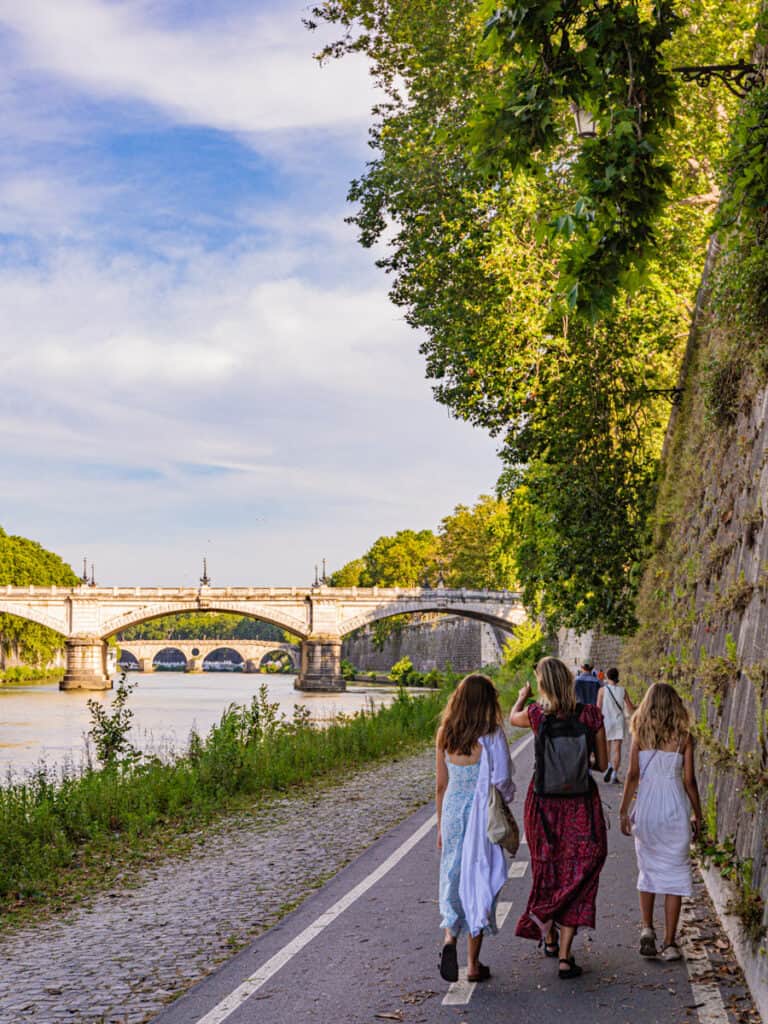
Except high and dry temperatures during the summer. I remember visiting Rome in August 98 and dying after a day exploring Ancient Rome in baking 40+ temperatures. This time visiting Rome in June wasn’t too bad. It was hot, but not unbearable.
We had many people recommend Sept-Nov as the best time to visit Rome for cooler weather. I also had a friend visit in April who said the weather was pleasant and the crowds were not too bad.
9. Explore One Area a Day
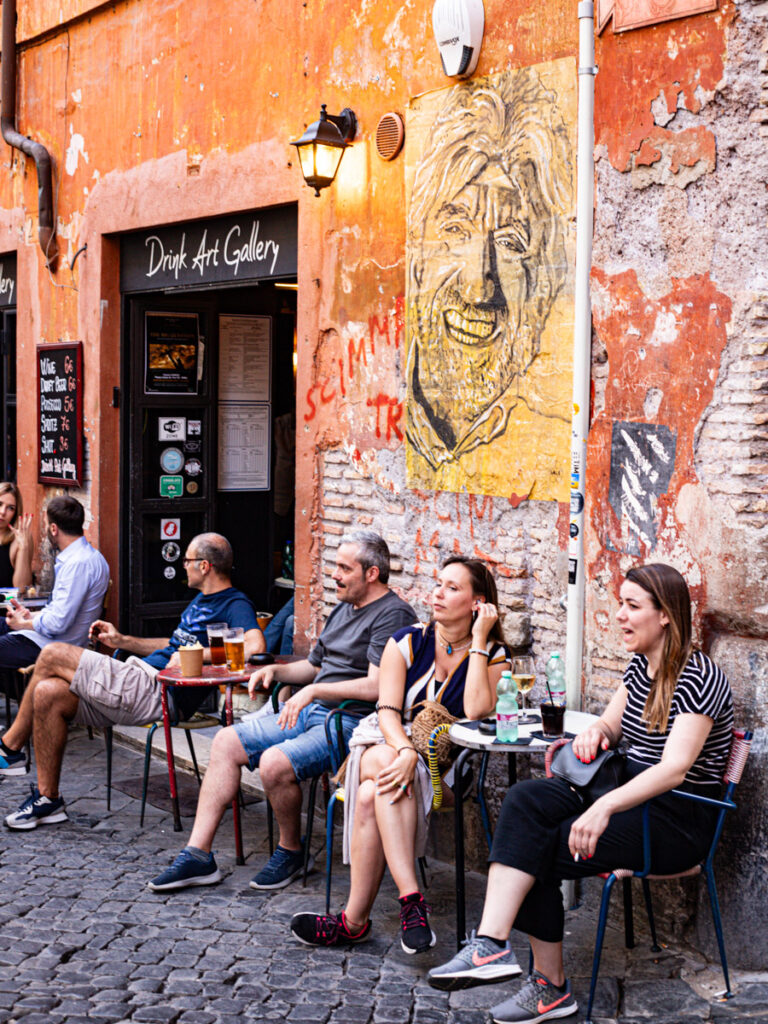
Even though Rome is quite compact, you’ll still want to plan your day so you explore one area a day. This will reduce your travel time from Point A to Point B, and give you more time to relax during cappuccino hour.
To make this easier, follow our planning strategy outlined in our post, how to plan a trip to Europe.
10. Guided Tours Are Key for Popular Attractions
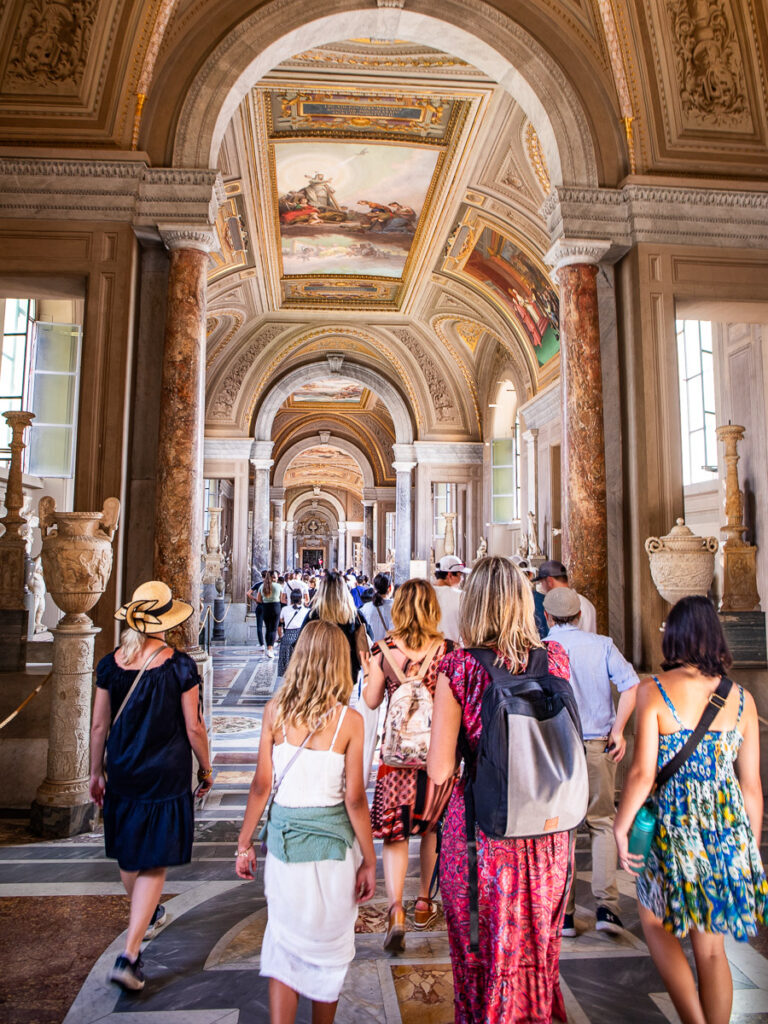
Don’t even think about visiting the Colosseum or the Vatican without being on a guided tour. Of course, you may get lucky outside of peak summer season, but I’d still take the guided tour.
We joined a guided tour for the Vatican, and it turned what could have been a disastrous experience to an informative and interesting one.
The Vatican was insanely busy, and thanks to our guide, we did not miss any of the most important parts. She gave us the quick abbreviated history while navigating us through the crowds allowing us to easily follow, listen, and take it in.
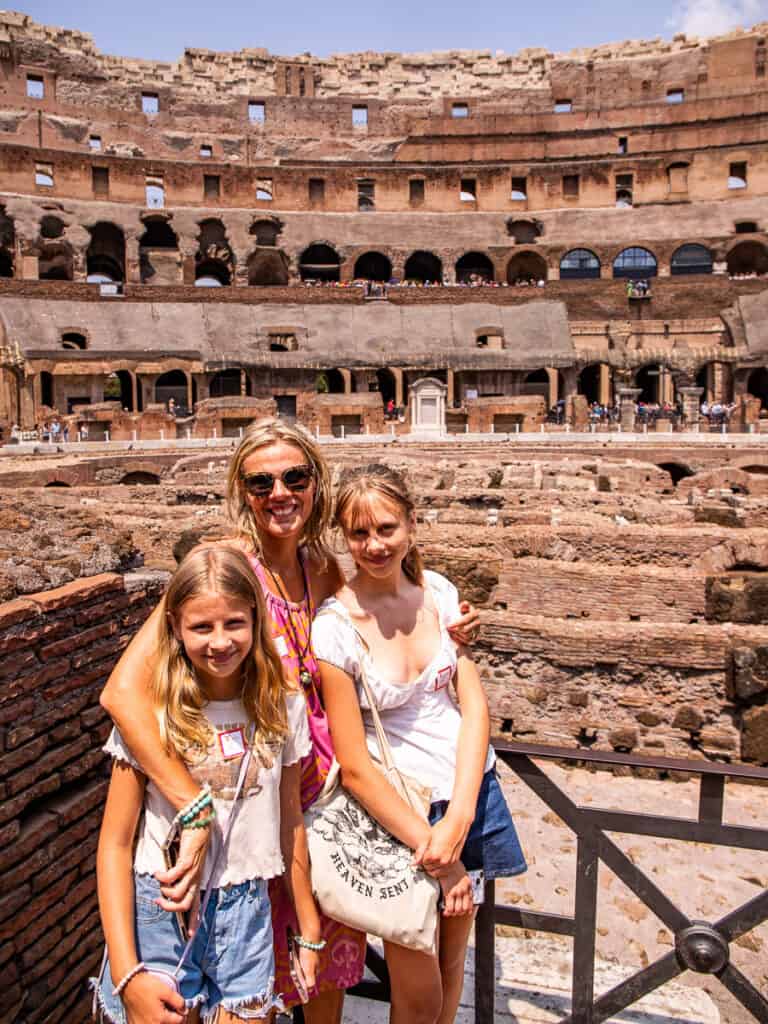
Regrettably, did not do a guided tour for the Colosseum. One of the Seven Wonders of the World ended up being our worst experience on the 4-week Europe trip.
We didn’t even know there was a one-way flow through the Colosseum as the crowds were so thick. We got swept up in it and before we knew it, we were getting spat out at the end. The attendants would not let us go back, even after explaining that we missed an entire section of the Colosseum.
We didn’t get time to appreciate or learn anything about this architectural masterpiece and an important part of Ancient Roman civilization.
Our guided tour of the Pantheon also helped me understand its importance, otherwise it just would have been another church with a domed roof.
OUR GUIDES TO ROME’S TOP ATTRACTIONS
11. Go on the First Tour of the Day / Entry Time

Undoubtedly the best tip for traveling anywhere is to do the earliest tour or timed entry slot for the most popular attractions. This is difficult to do for a city like Rome where an attraction is on every street corner.
If you are in Rome for more than a day (please say you will be) separate the top attractions into separate days and do them first.
You’ll have a greater chance of fewer crowds and delays from domino effects. Plus visiting busy top attractions can get tiring so you’ll have the afternoon to roam and relax in Roman cafes.
We ended up on the afternoon tour for the Vatican, which was chaotic. But our guide said the morning one was worse. Sometimes it will just always be busy.
For the Vatican, there are even earlier tours that will avoid the crowds.
12. Note Some Attractions Are Closed or Free on Certain Days
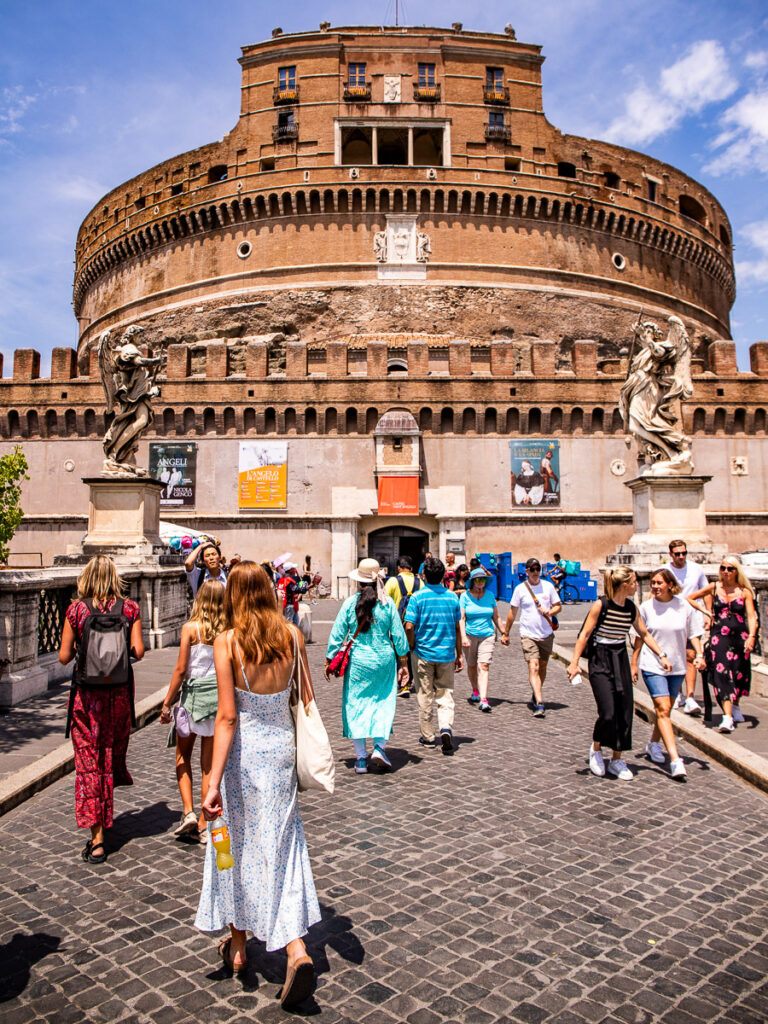
Check attraction opening and closing times as some may be closed on the days you want to visit. The Vatican closes on Sunday and the Castel Sant’Angelo was closed on Mondays when we wanted to visit.
Some attractions are free on the first Sunday of the month including Colosseum, Roman Forum, and Palatine Hill.
And some attractions, like the Pantheon, require reservations on the weekend. (I would do that anyway!)
13. Use the Rome City Attraction Pass
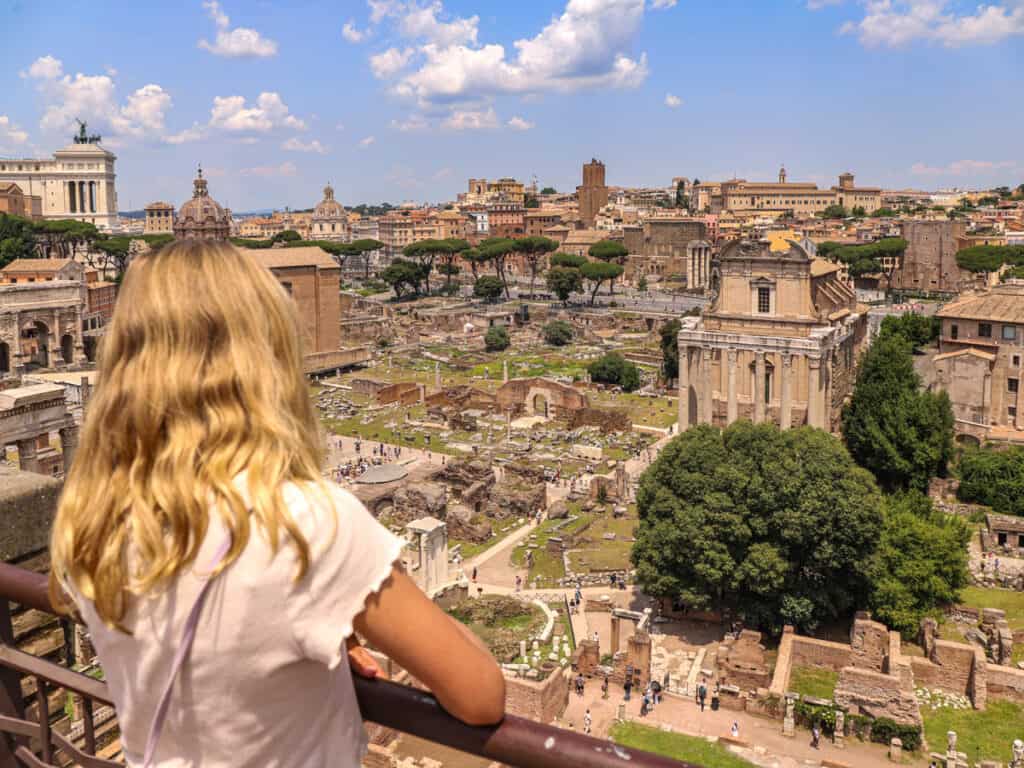
One of the best ways to save money on attractions on your Rome vacation is with the Rome Go City attraction pass.
For one price, this pass will give you entry to several of Rome’s top attractions. They also include lesser-known attractions and tours like cooking classes and can give you discounts at restaurants.
You choose a Go City tourist pass for a set number of attractions: 2, 3,4,5, 6, or 7. You don’t have to choose which ones when buying the pass but do your research, so you know what attractions you want to do, and cost compare between the pass and paying for each individually.
We had a 3-attraction pass and used it for the Roman Forum & Colosseum, Guided tour of the Pantheon, and we planned for Castel Sant’Angelo, but it was closed!!
14. Skip-the-Line Passes are Essential
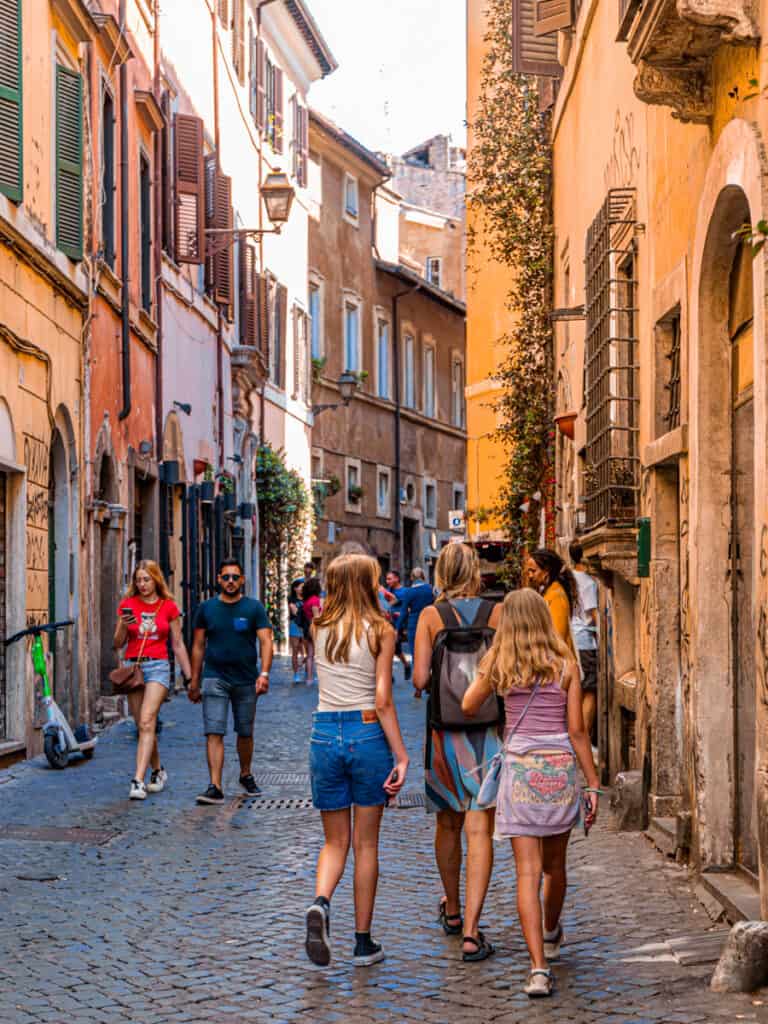
I’m shocked every time I arrive at an attraction and see people waiting in long lines to purchase a ticket on the spot.
Book the ticket in advance – timed slot or skip the line. You then walk straight up to the gate at your time slot and enter. You may have a wait getting through security, but generally you go straight in.
I recommend arriving a little earlier than your time slot for this reason. Sometimes, they’ll even let you in earlier.
One prime example of where this comes in handy is if you want to visit the Vatican Museums and Sistine Chapel in The Vatican City. If you don’t get your ‘skip the line’ tickets in advance, expect long queues for up to 3 hours.
15. Book (almost) Everything in Advance
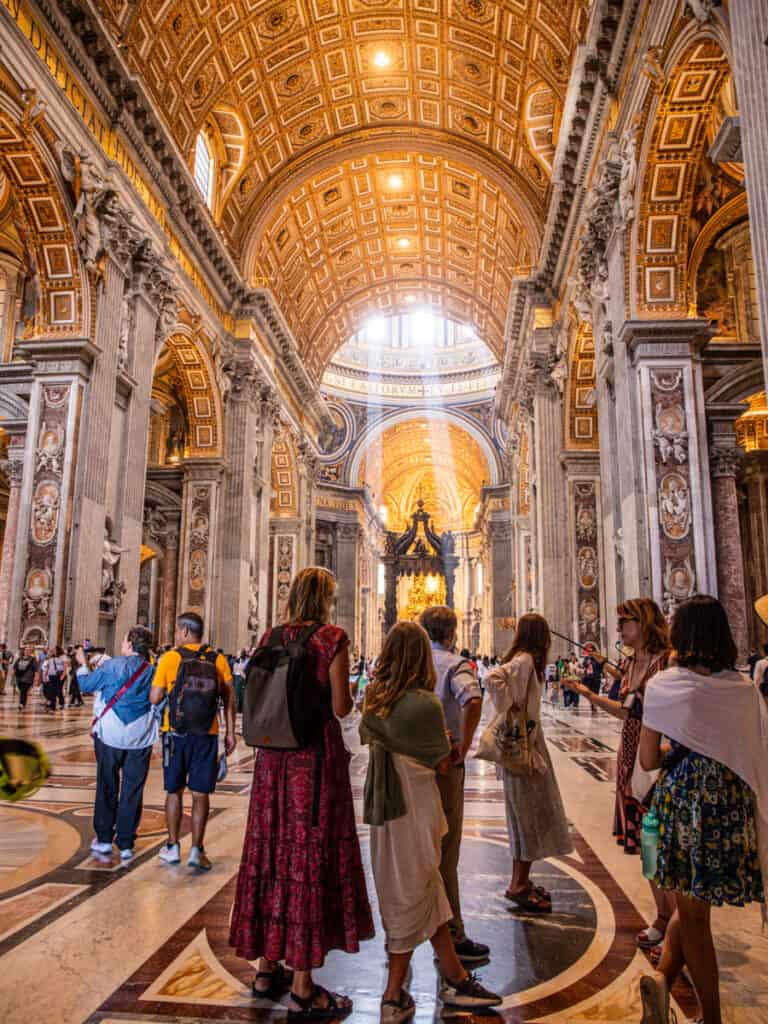
Travel no longer has the freedom and spontaneity of twenty-five years ago when you could just show up and figure it out along the way.
For Rome, especially in the summer, if you don’t book in advance (and sometimes far in advance) you will miss out. We booked our flights three months in advance, or accommodation not long after, and our tours and attractions at least a month in advance.
Most tours and hotels do offer free cancellation up to 24 hours in advance, so if you do feel like doing something spontaneous, there is always an option to cancel and try to rebook for another day.
If you decide something at the last minute and it is booked out, try to join a guided tour through sites like Get Your Guide, Viator, Tiqets, LivTours and Walks of Italy. They pre-purchase tickets in advance for their tours, so if they have space available, you’ll get in.
As they are guided tours it will cost more than a straight entry ticket, but at least you’ll get in and receive additional commentary on the way!
Book your 1-2 activities for the day, and then plan the free attractions, like the Trevi Fountain and Spanish steps around that.
16. Cover up at Religious Sites
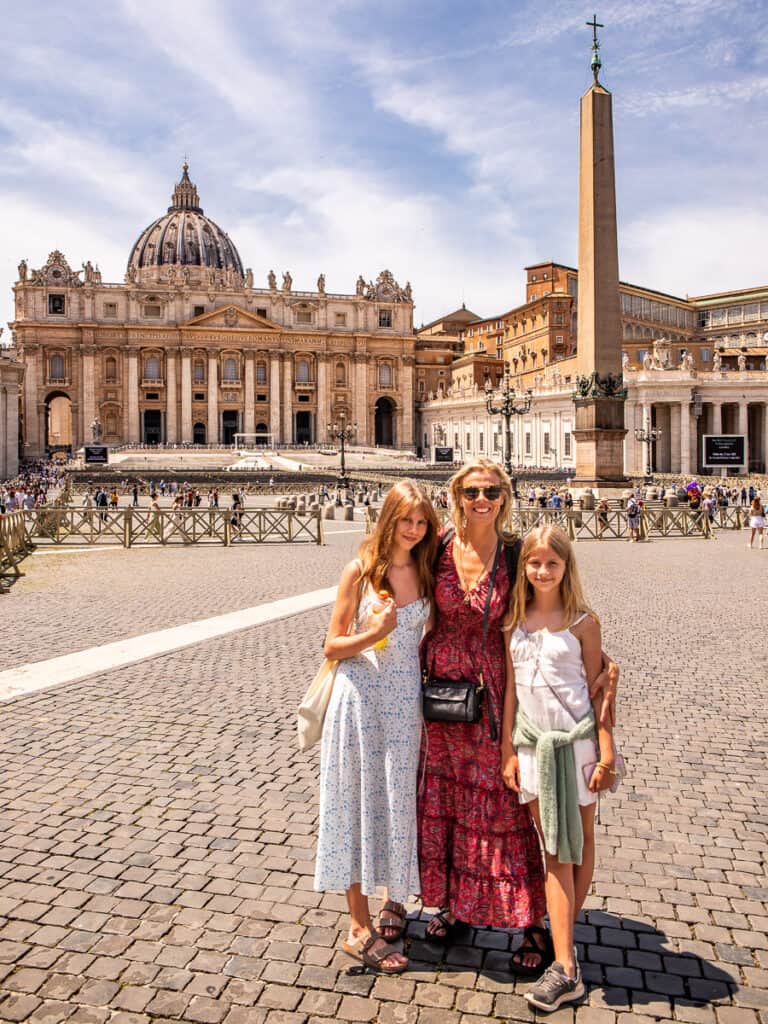
It’s Rome – the seat of the Catholic Church. The city is filled with churches, cathedrals, and important religious sites.
Make sure you are dressed appropriately with shoulders, and often knees, covered– men and women.
I leave a light scarf in my bag that I can easily throw over my shoulders, and usually wear a maxi dress on the cathedral visiting days!
We did forget ours in Florence and Venice. Don’t worry, there is always a scarf hawker nearby capitalizing on this opportunity, as many religious sites will not let you in.
17. Street Food is Prolific and GOOD
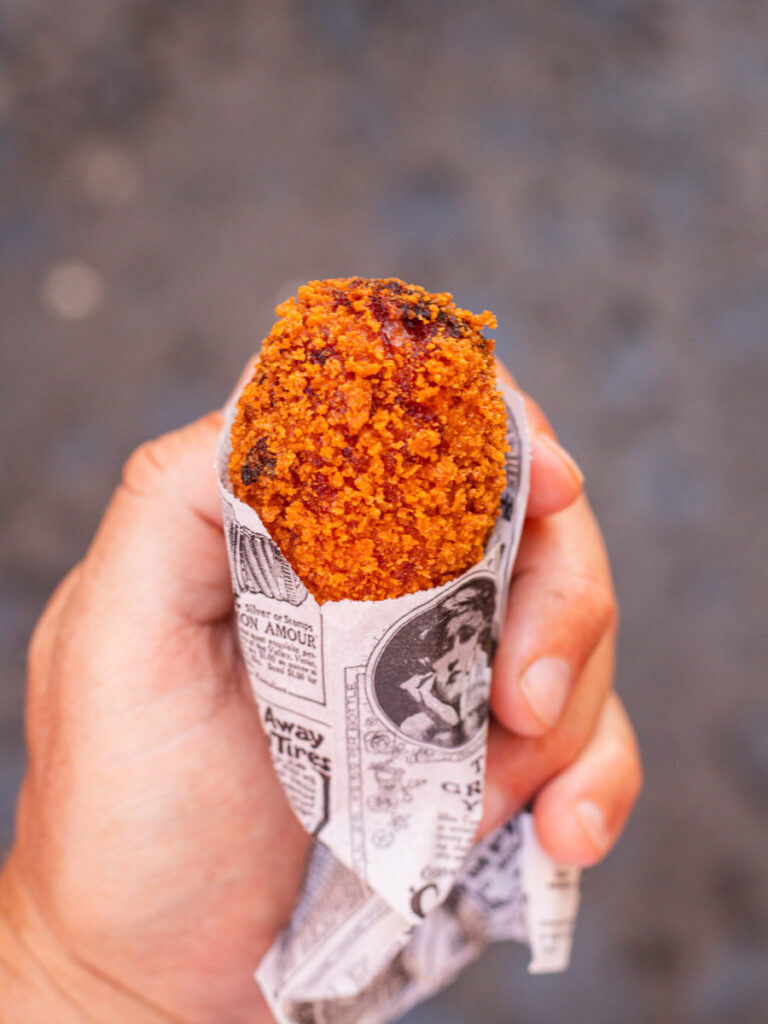
As we learned on our Rome food tour, street food is an essential part of Roman life. It was strategically designed this way during the Roman empire to create a vibrant lifestyle that would distract Romans from the political schemes going on behind the scenes.
Now, it serves the chaotic lifestyle of busy Romans (and tourists) who only have enough time to grab and go!
This makes for a fantastic experience for your visit to Rome – lots of variety, delicious food, and a great price.
Some favorites are deep-fried Jewish artichokes, Roman pizza, suppli, and gelato or graphas (donuts)
18. Gluten Free is Surprisingly Easy to Find
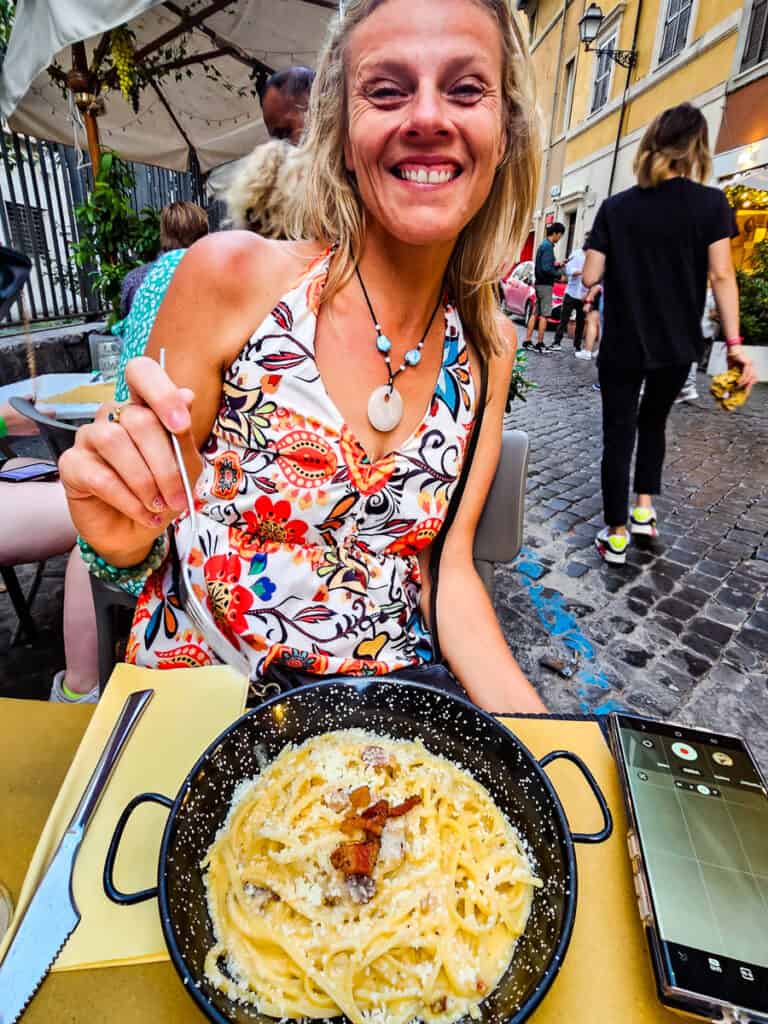
Italy – the home of pasta and pizza. I felt for sure I would struggle finding something delicious to eat. Never fear, gluten free Rome is here!
I was very impressed with the amount of gluten free food available. Most restaurants will have gluten free pasta, and some may have pizza base. Always ask the waiter.
Everyone knows and understands it and won’t look at you weirdly like they may do in Paris, and some parts of the US and Australia!
Our favorite restaurant of all in Rome was Mama Eats in Trastevere. It was entirely gluten free, but they also made non-gluten free versions of everything.
We ate there a couple of times as the food was so fresh and flavorful and made from scratch. I can’t tell you how wonderful it was to know I could safely devour a delicious pizza or pasta carbonara followed by tiramisu.
And it was the best tiramisu I’ve ever eaten! It was also the first time we’ve ever tried limoncello (yum)and grappa (disgusting)
19. Don’t Eat on the Piazzas
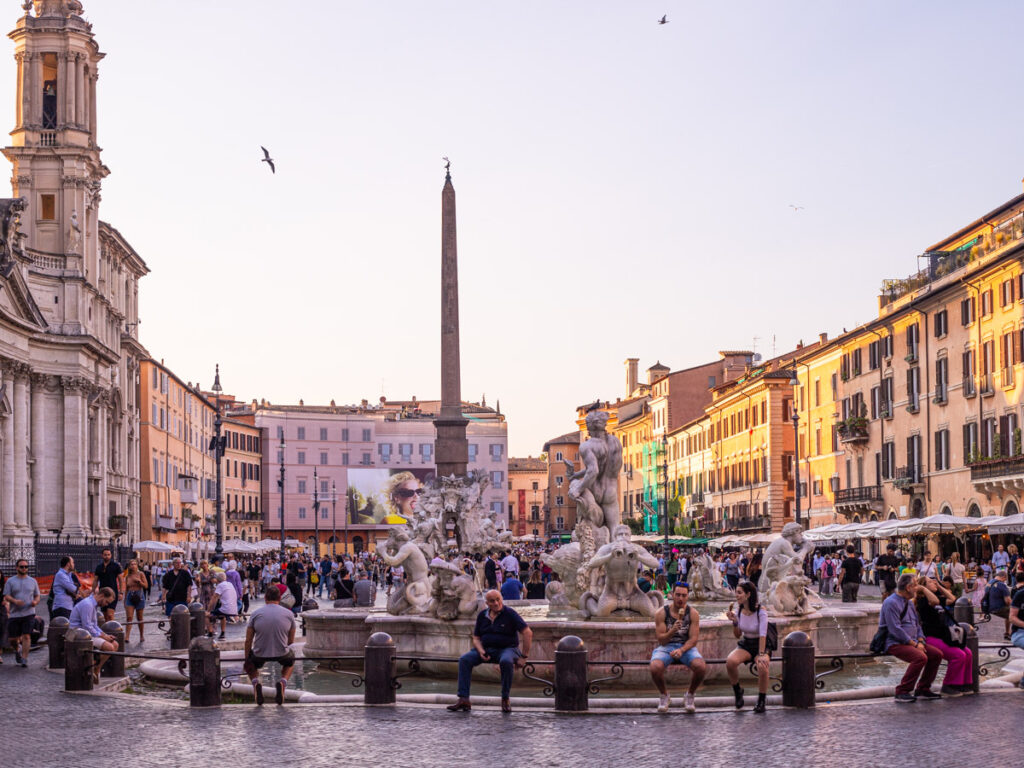
The piazzas, or squares, in Rome are a traditional gathering that are now very touristic, especially Piazza Navona. That means high prices, and probably not the best traditional Italian food.
Mattia, the local guide on our street food walking tour, was quite vocal in letting us know how these tourist places no longer stick to traditional recipes because tourists don’t know any different and they can make more money by cutting corners.
Head further away from the piazza to small streets and alleyways in neighborhoods mentioned above. You’ll find authentic food at great prices.
We had a delicious anchovy pizza just a block away from Piazza Navona – it was probably still considered expensive. But it was €8 and big enough to share!!
20. Share Pizzas (And other food)

You guys!!! Save money on food and share a pizza. They only come in one size – big enough for two – and they are cheap and delicious.
Food in Italy is very sharable which can save you a lot of money, especially when visiting with kids.
21. Rome has Free Water Fountains (but you’ll pay at the table)
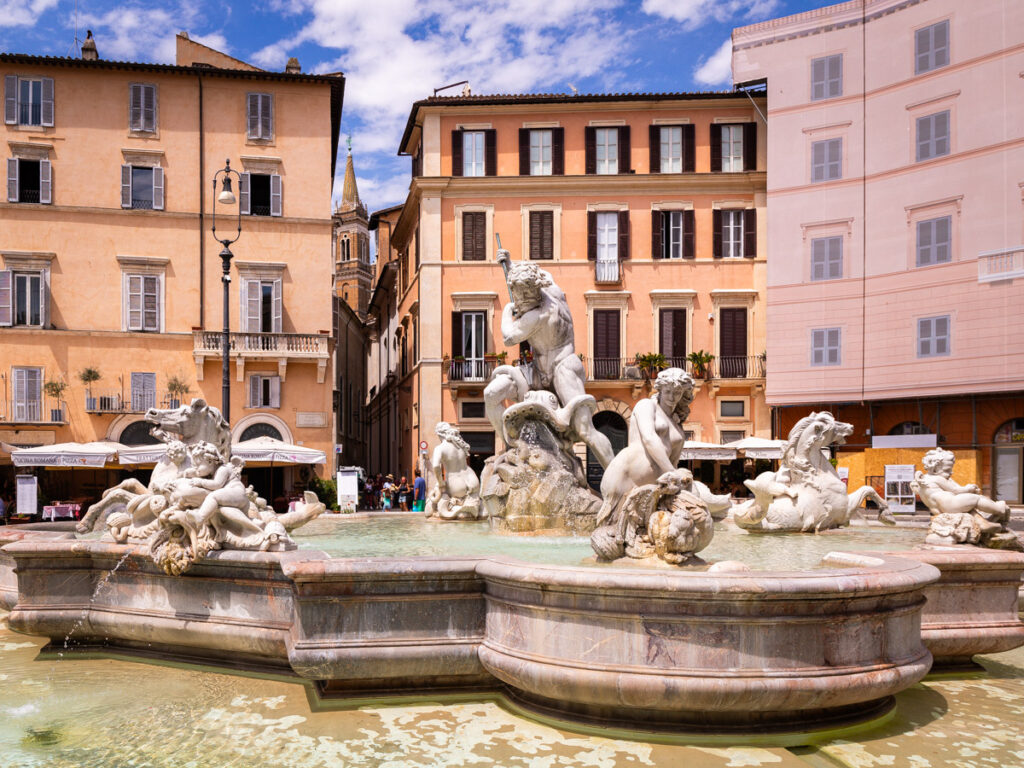
Thirsty? If you read our tips on things to know before visiting Europe, you’ll know, it’s hard to get a decent serving of water in restaurants!
But Rome has many quality drinking fountains in the streets around the city. Bring your own reusable water bottle to take advantage of!
There is no need for you to purchase single use plastic water – it’s highly discouraged. Thank you, Europe, for caring about the environment.
Despite always asking for tap water at the restaurants in Rome, they almost always charged us! In other European countries they didn’t.
22. Take Away Everything

In Rome – and Italy – it’s always cheaper if you drink/ eat at the bar rather than at a table. Alternatively, you can take it to go. Italians do find it weird if you drink any kind of coffee drink on the run.
Previous to our Rome trip, we never drank espressos, but we grew quite enamored with this short burst of afternoon energy for only €1.
Breakfast on the run at the bakery around the corner from our apartment was less than €9 for two cappuccinos, two chocolate croissants and two plain croissants.
You can also grab pastries from espresso bars!
23. Join in on Aperitivo Hour
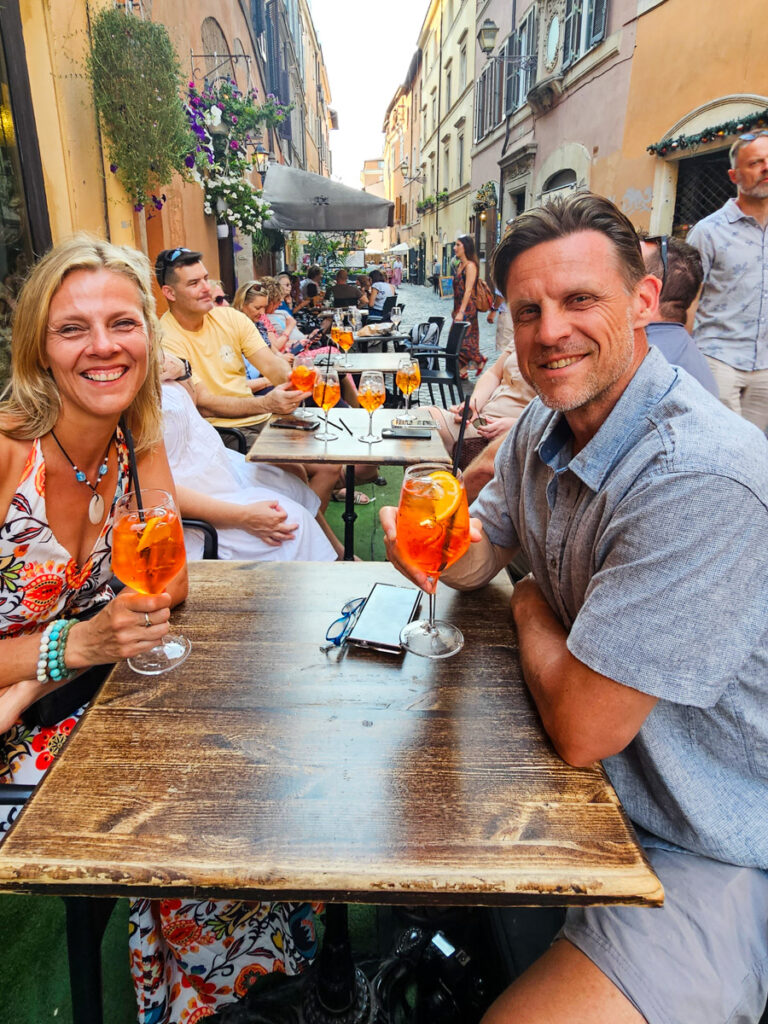
What time is it? Aperitivo time! We loved when 4pm rolled around in Rome (or anywhere in Italy) it was time for a much-earned rest at any bar you can find for Aperitivo hour.
It’s basically a time to rest with a drink – usually Aperol Spritz (a must try Italian pre-dinner drink) and complimentary bar snacks, which range from nuts, chips, little fried bites, and even bagels (but we had that in Verona)
It’s yet another great way to save money on food in Rome. You can find Aperol Spritz during this hour for € 4-7. It’s cheaper if you sip and stroll, but then you miss out on free snacks.
24. Order House Wine and Save (but not soda)
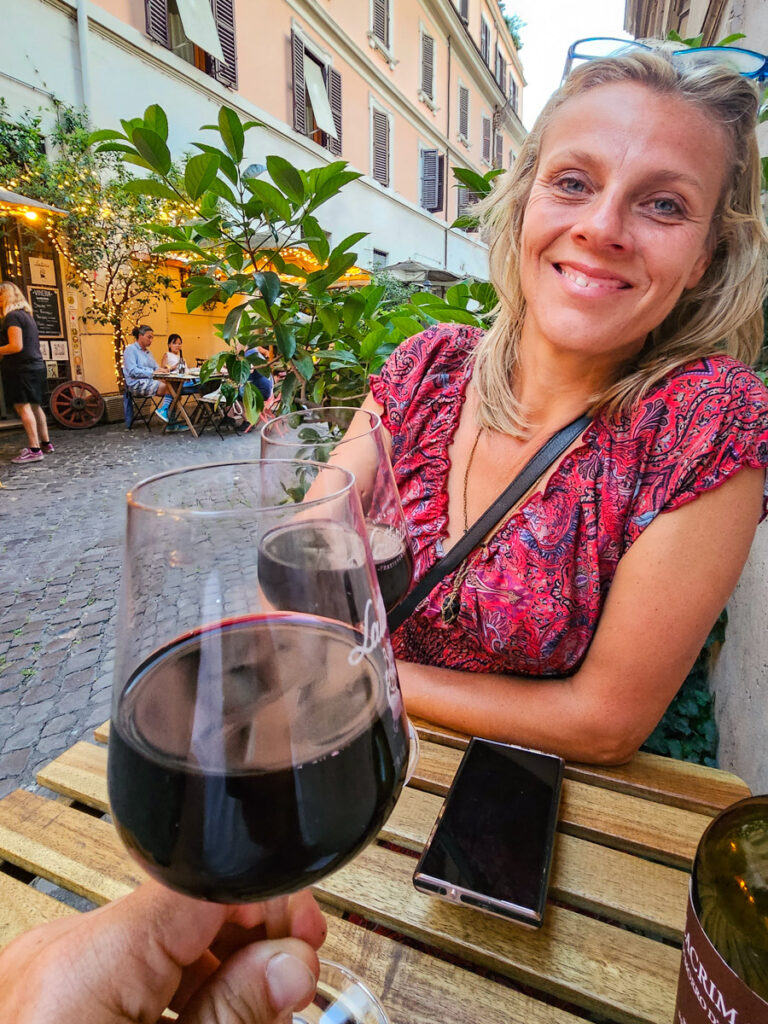
I absolutely loved not even having to look at the wine list in Rome (make that Europe) I just knew house wine would come out local and good and at a great price.
If there are two of you drinking, you are better off ordering a carafe or half carafe. It will be a lot cheaper than a glass of wine each. Craig and I would normally order the half carafe.
Rome was not as bad as Paris when it came to the price of sodas. Our girls were put on soda limitations for our Europe trip, when the bill in Paris arrived at €6.50 for a small bottle of Fanta. I think I spat out my €3 wine.
Not Proven HOWEVER, my experiments overwhelmingly show that Food and wine are cleaner and healthier in Europe so enjoy it!
I overindulged and did not put on any weight and felt great. Two weeks back in the US and it’s a different story.
25. Do a Food Tour or Cooking Class
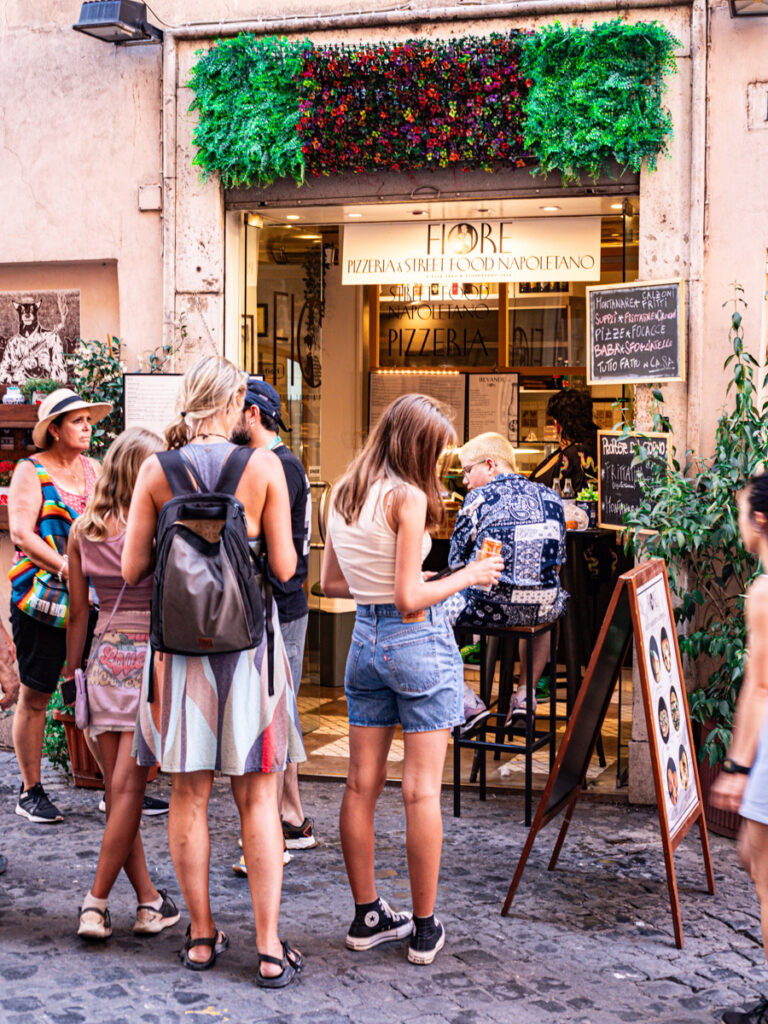
You’re in Italy – one of the best cuisines in the world. Except, you’ll learn on a food tour that Italy doesn’t really have a national cuisine but is made up of regional cuisines.
The country was only unified in 1861 and cuisines were well established by then in the different regions that eventually became Italy.
Our street food tour was fascinating – not just for the delicious and abundant street food stops – but for the insights she gained into Roman food and history.
Plsu, time it right, and you’ll get one meal of the day covered – although with the amount of food we ate, it could have covered two! When you think of it like that, it’s quite a good deal.
You may also want to consider doing a cooking class. We did one in Tuscany and thoroughly enjoyed learning how to make pasta and tiramisu. It was one of the girl’s favorite activities on our trip.
26. Eating Hours in Rome Are Late
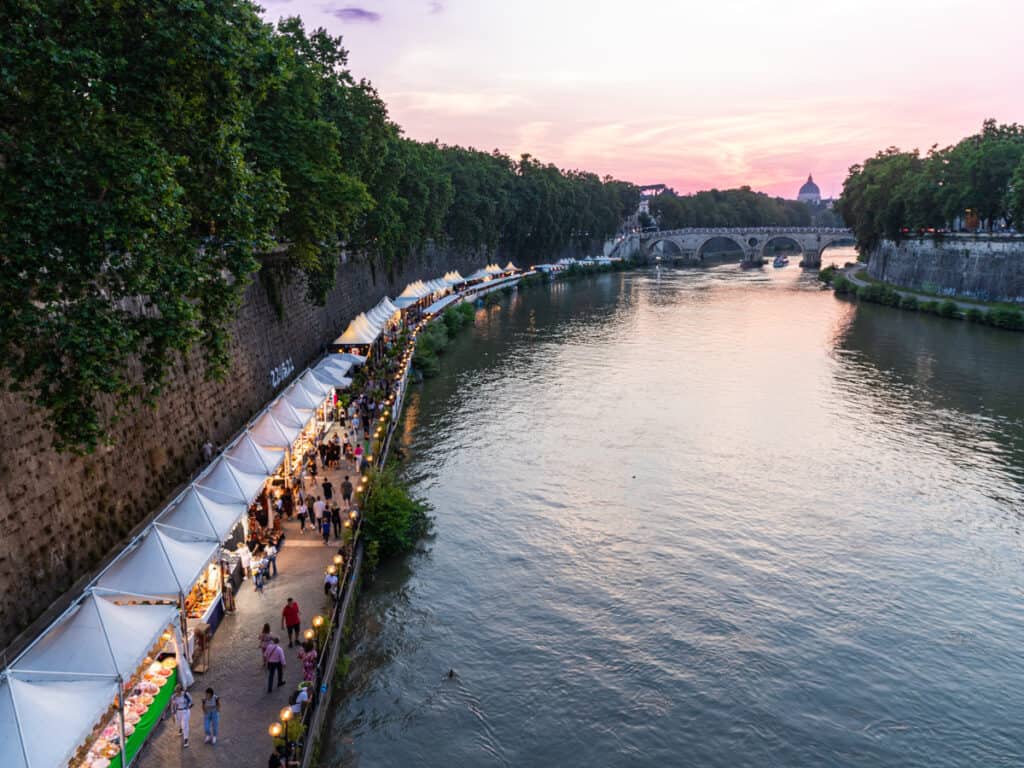
Italians generally eat lunch between 1 and 3 and dinner around 8-9. So if you want to avoid lines, eat outside of these hours.
I am not someone who likes to eat dinner after 7:30, so the earlier dinner times suited us perfectly. We never had to wait for a table.
And we followed our apartment manager’s advice, eating mostly in Trastevere. We didn’t enjoy the restaurant on our last evening though and wished we just went to Mama Eats again!
27. Service is Slow
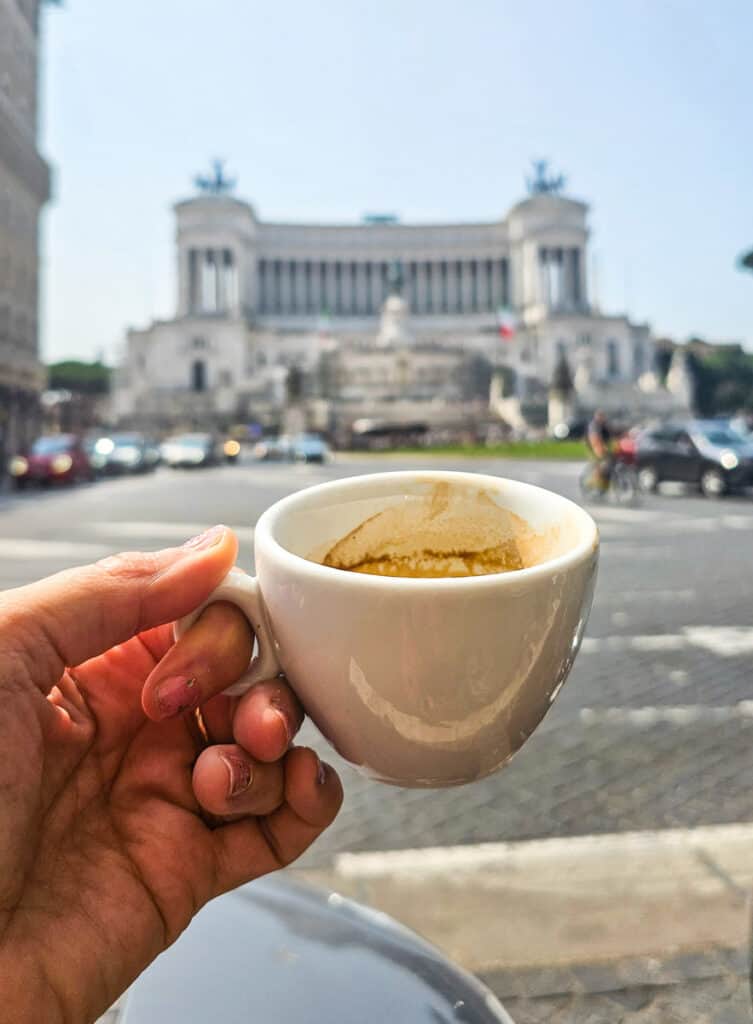
Service in Europe is painfully slow and inattentive. You will be flagging and chasing down servers the entire time.
Italians like to linger so be prepared for longer eating and drinking social hours. It’s not altogether a bad thing.
If you’re in a rush, be ready to order everything all at once and ask for the bill as soon as possible. They don’t like to bring checks out while you’re still eating.
28. Tipping is (mostly) not expected
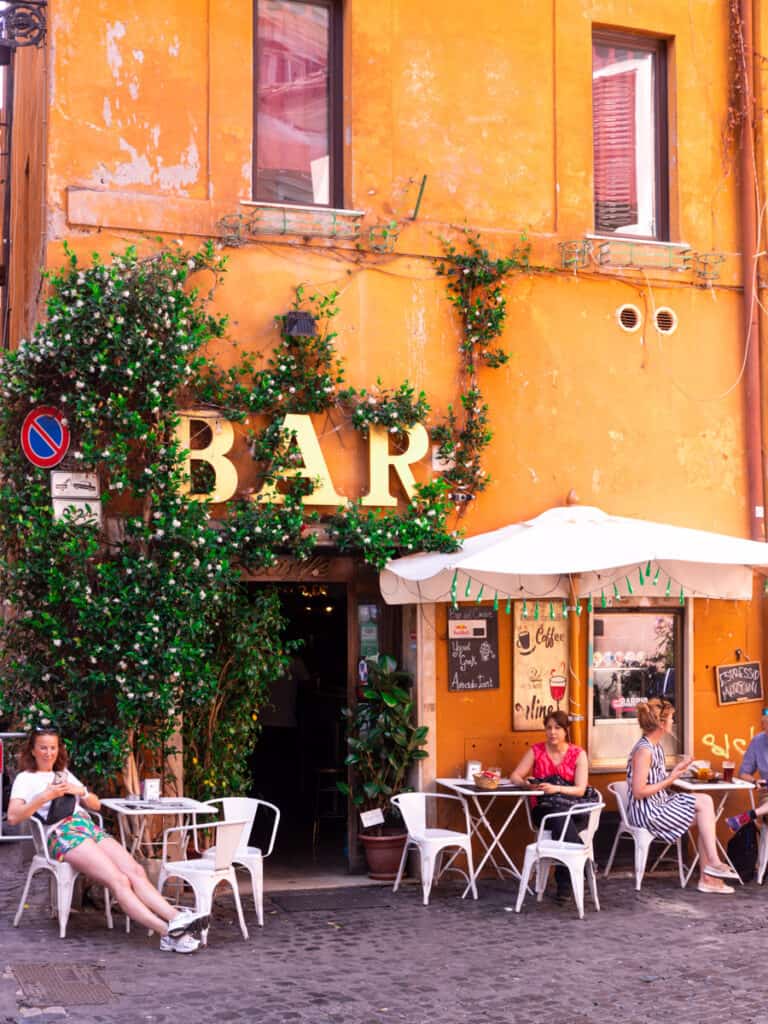
You don’t have to tip in Rome, it’s not part of the culture. You don’t have to tip a taxi driver, waiter or service staff in hotels – the price is the price.
However, check your bill in restaurants as many will add a service charge OR, what we commonly found, a per person cover charge.
Of course, you can tip if you want, and sometimes we did. In Europe, it’s typically 10%. I gave 20% at one restaurant in Nafplio, Greece and the waiter hugged me, he was so grateful.
29. Museums Are Free on the Last Sunday of the Month
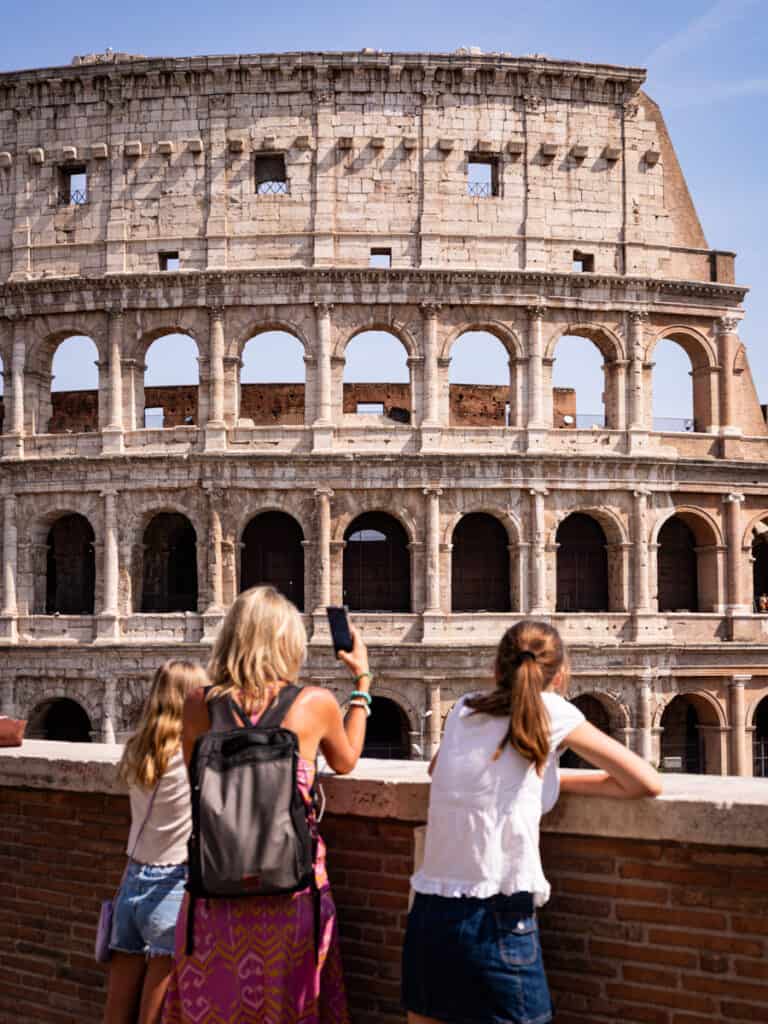
You can get free entry to museums and attractions, including the Colosseum, on the last Sunday of the month.
While you might think this is a good time to go, remember Rome is the most visited city in the world by tourists so you may find it more trouble than it’s worth (especially if you visit in the summer).
Try to go to museums early in the day to avoid the crowds.
30. Rome is Good for Kids
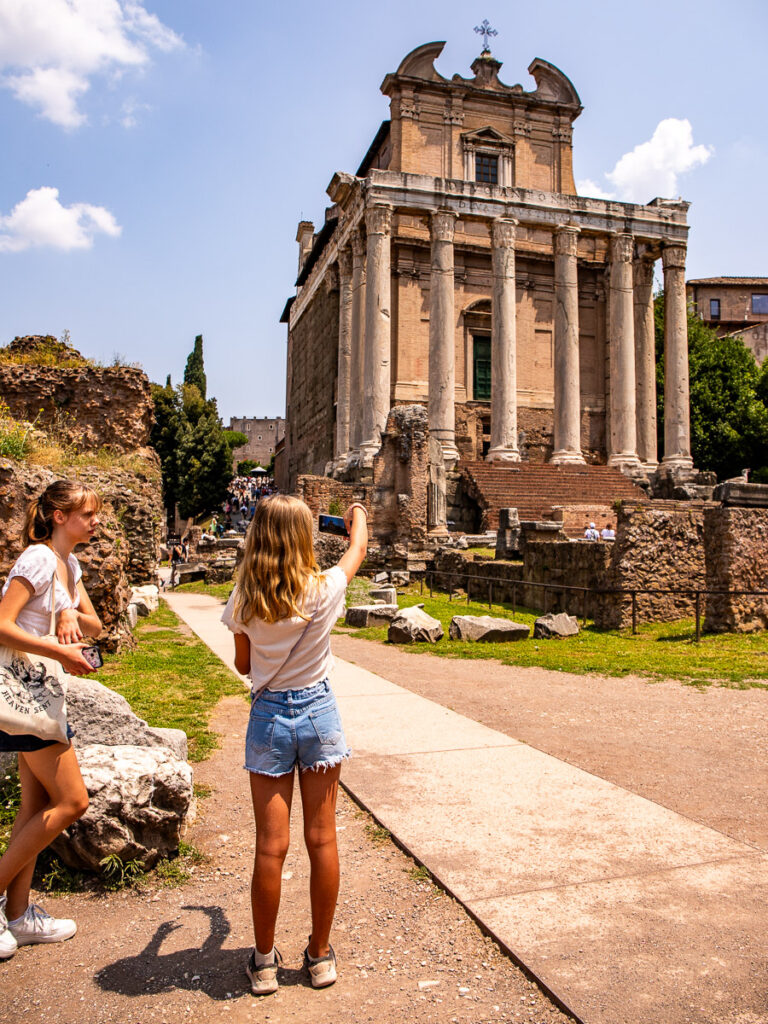
Of course! As mentioned, I knew we had made the best decision to visit Rome with kids after only an hour in the city when they were non-stop taking photos! That continued throughout our three days in the Eternal City.
From ancient monuments to cultural attractions, history is brought to life in this city, and not in a dull, classroom kind of way.
Older kids will be captivated by Rome, as they understand more what they are seeing and learning about.
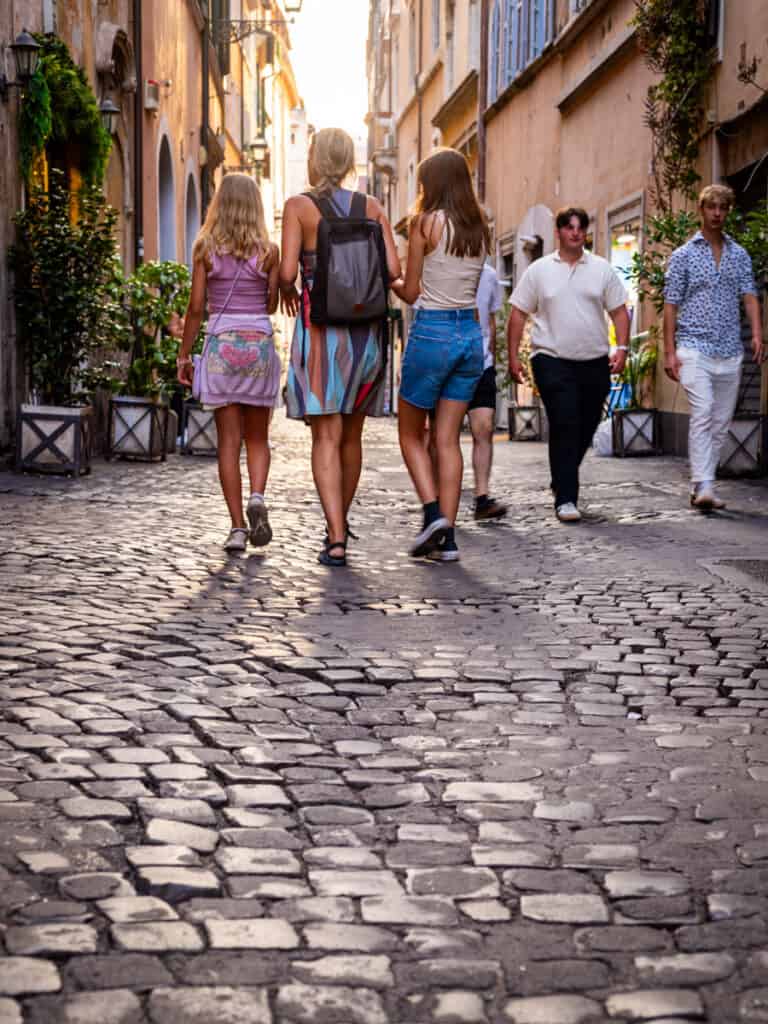
As it’s walkable you don’t have to worry about scrambling on public transport, and many of the attractions have family tickets, so you can save a little on entrance fees.
To top it off, even the fussiest of eaters will enjoy the food in Rome.
Trust me, our Savannah was the fussiest, but she dived right into the food, and tried everything on our food tour. And of course, what child does not want daily gelato?
31. Know How Long You Need in Rome
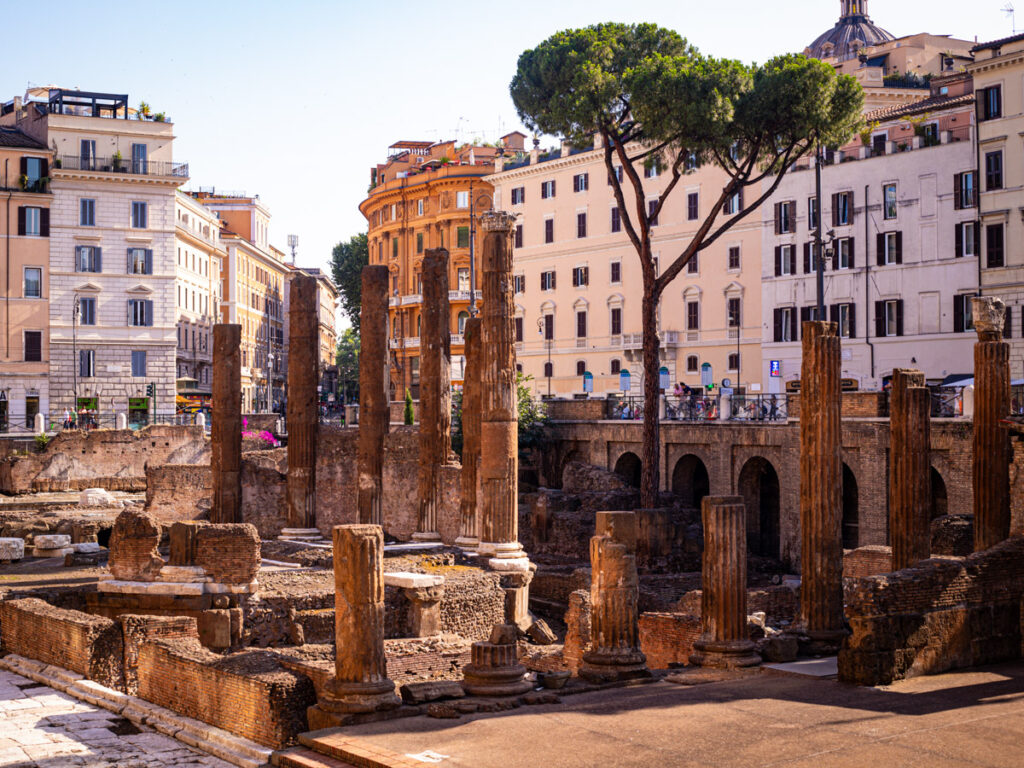
Thanks to a delayed flight, we had 2.5 days in Rome. We recommend you spend at least 3 days in Rome.
But if you have more time at your disposal, 5 days would be ideal so you can travel slowly and take more of the atmosphere in and spread out those busy attractions.
32. Is Rome Safe?
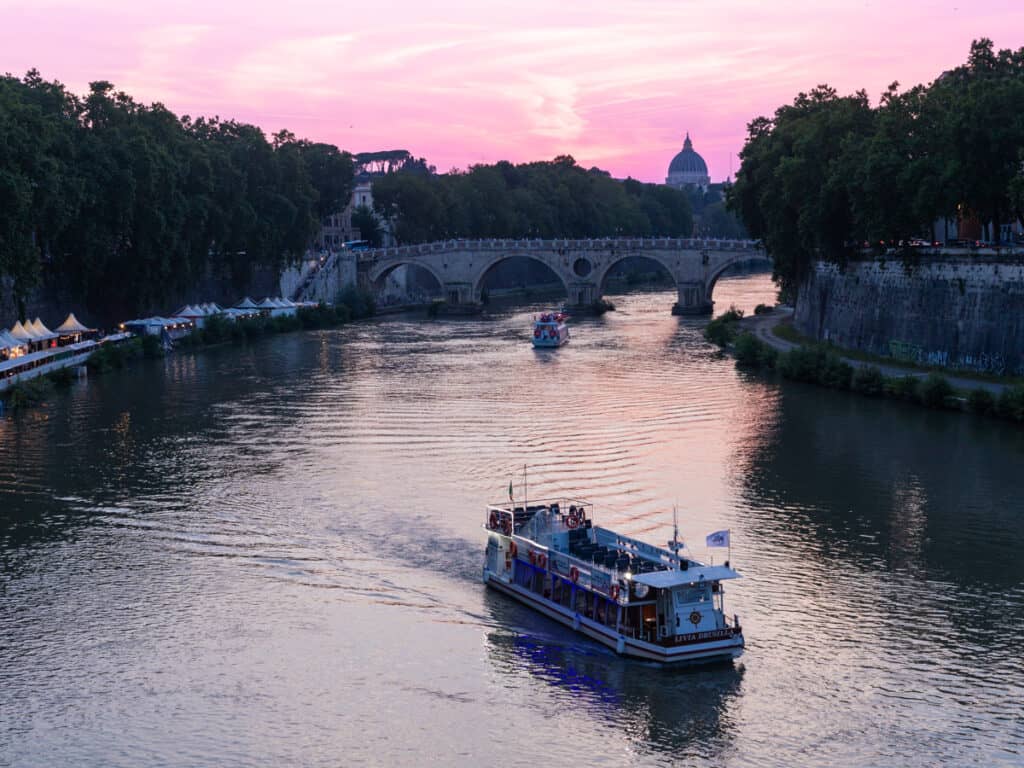
We felt very safe in Rome. With any popular destination, you’ll want to be careful of pickpockets especially around busy and crowded attractions.
Keep your possessions close and consider wearing a money belt. I wear a cross body purse so it’s nice and attached and in the front of my body.
Rome is usually so packed with visitors until after sunset, so it offers an extra layer of comfort to know many people are close by. Be careful wandering around on your own, especially at night, and down any winding alleyways without people in them!
33. You’ll Pay for Restrooms
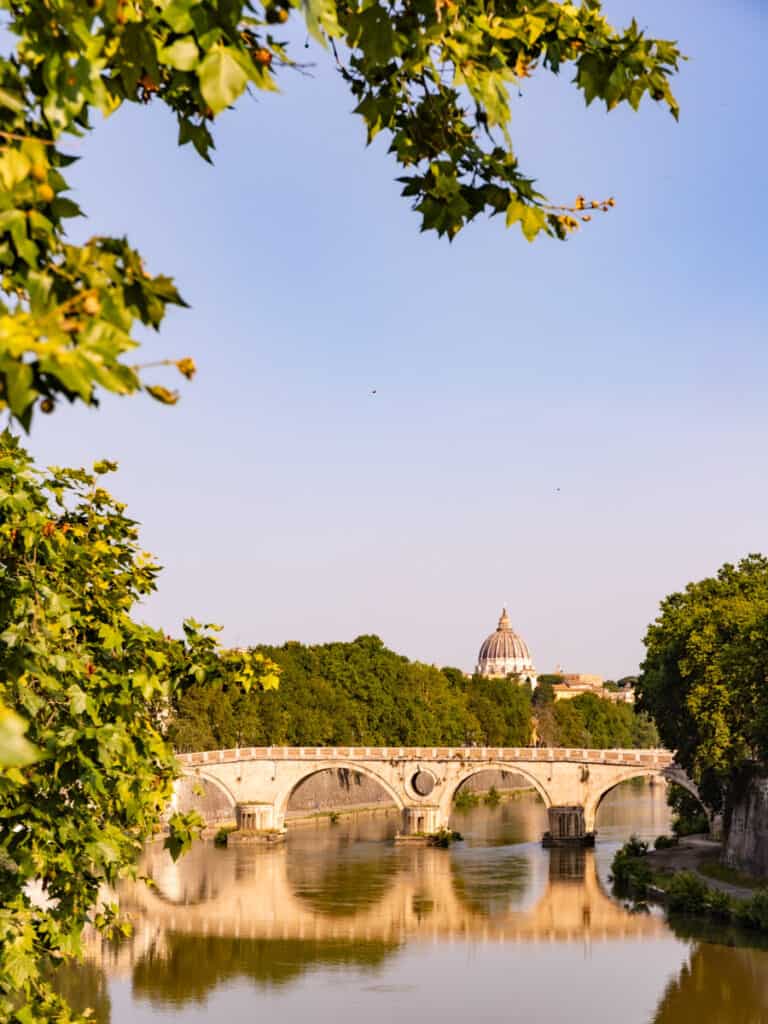
Paying for restrooms is fairly normal in Europe – I was doing it in 1997. Always carry 50c coins in case of emergencies. Otherwise, use toilets at attractions, cafes and restaurants so you don’t have to pay!
34. You Can Get Free Wi-Fi in Rome
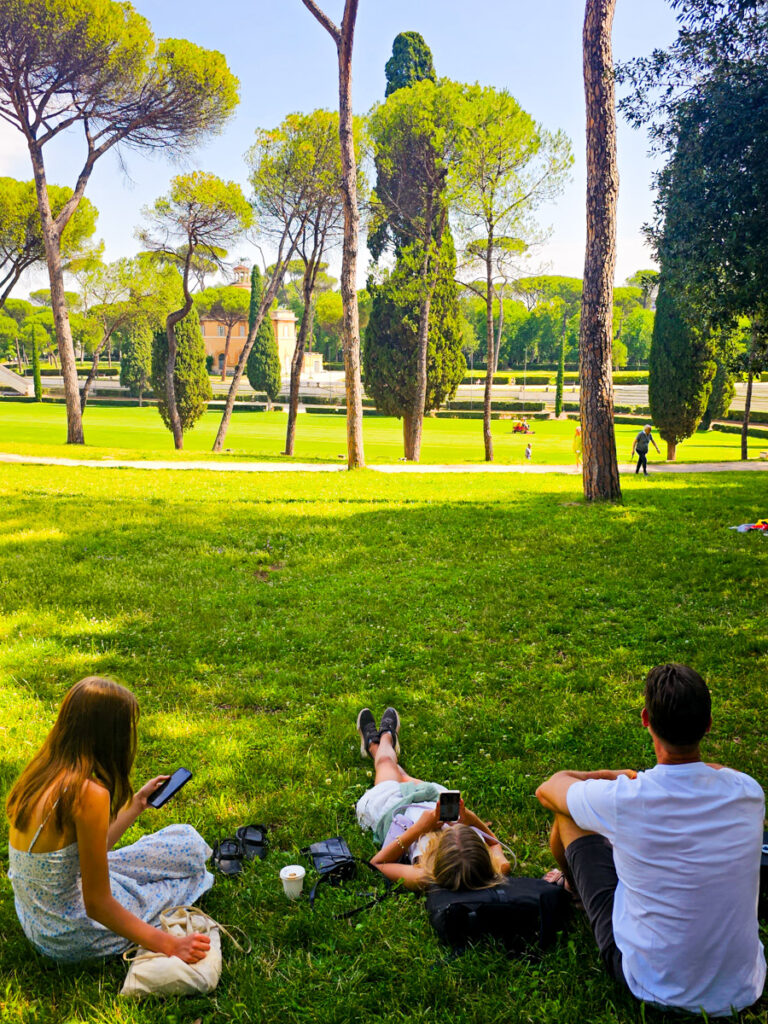
You will mostly get free, fast wi-fi everywhere, including accommodation, airports, trains, and even entire cities.
You’ll have to ask restaurants and cafes for the passwords, but they are pretty good at giving them to you.
If you have an unlocked phone, it’s most cost effective (and easiest) to get an eSim from Airola. Use that when you can’t get free wi-fi.
35. You Don’t Need To Use Cash Money Often
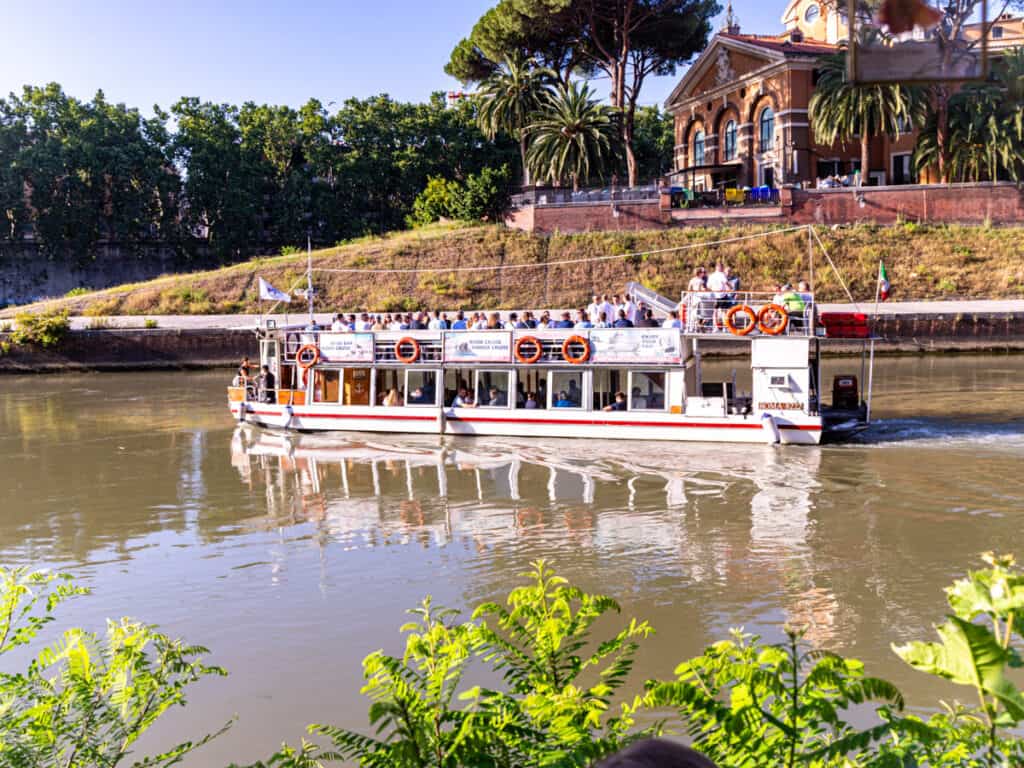
I don’t recall using cash anywhere in Rome. However, carry some cash (euro) just in case. We used our credit card for all purchases as we can accrue points and our card has no foreign transaction fees.
Tap and go is very popular in Europe, and typically all everyone offers. But if it doesn’t work, they still have chip facilities.
36. Will I Need to Know Italian?
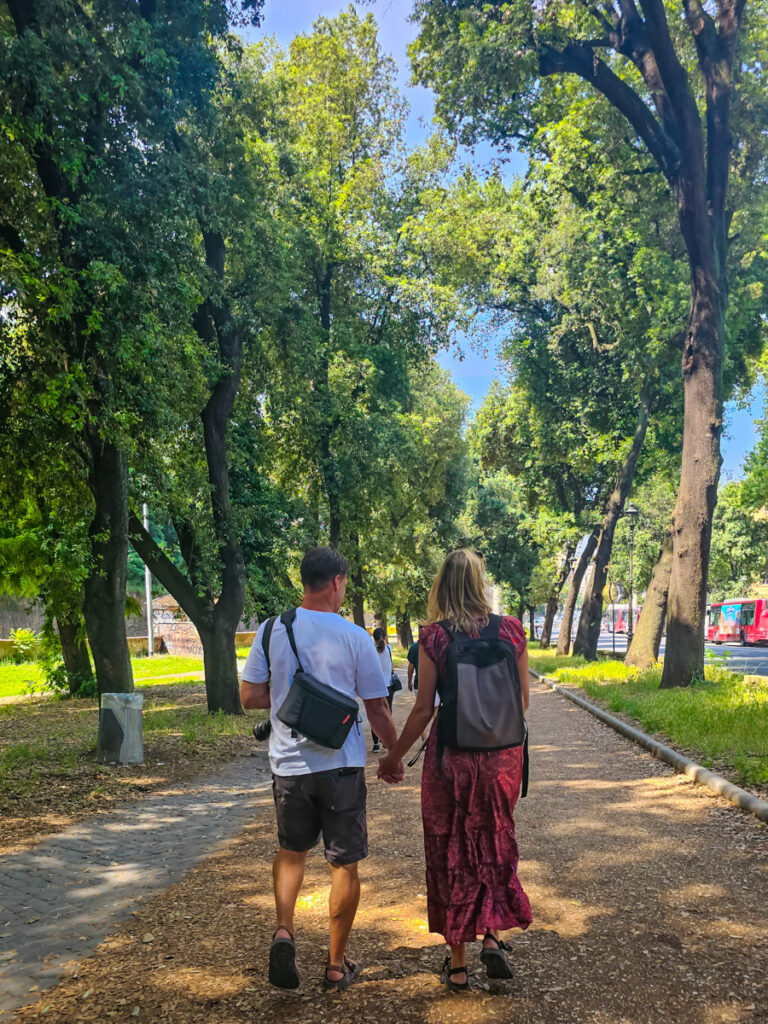
No! I was surprised at how easy it was to travel to Italy without knowing a lot of Italian. It was way better than France. Almost all signage has English translations and many Romans speak English, especially in tourist areas.
However, I recommend learning a few Italian phrases. I think the more you try to engage, especially with a few words of Italian, the more likelihood of a warmer interaction. I found Italians to be very warm and friendly.
Keep it simple with hello, please, thank you, excuse me, cheers… You can add more as you learn them!
- Ciao – Hello / Hi
- Buongiorno – Good morning
- Buonasera – Good evening
- Grazie – Thank you
- Per favore – Please
- Scusa / Mi scusi – Excuse me / Pardon me
- Sì – Yes
- No – No
- Buon appetito – Enjoy your meal
- Bagno – Bathroom
- Parla inglese? – Do you speak English?
- Quanto costa? – How much does it cost?
- Molto bene – Very good
Our Best of in Rome
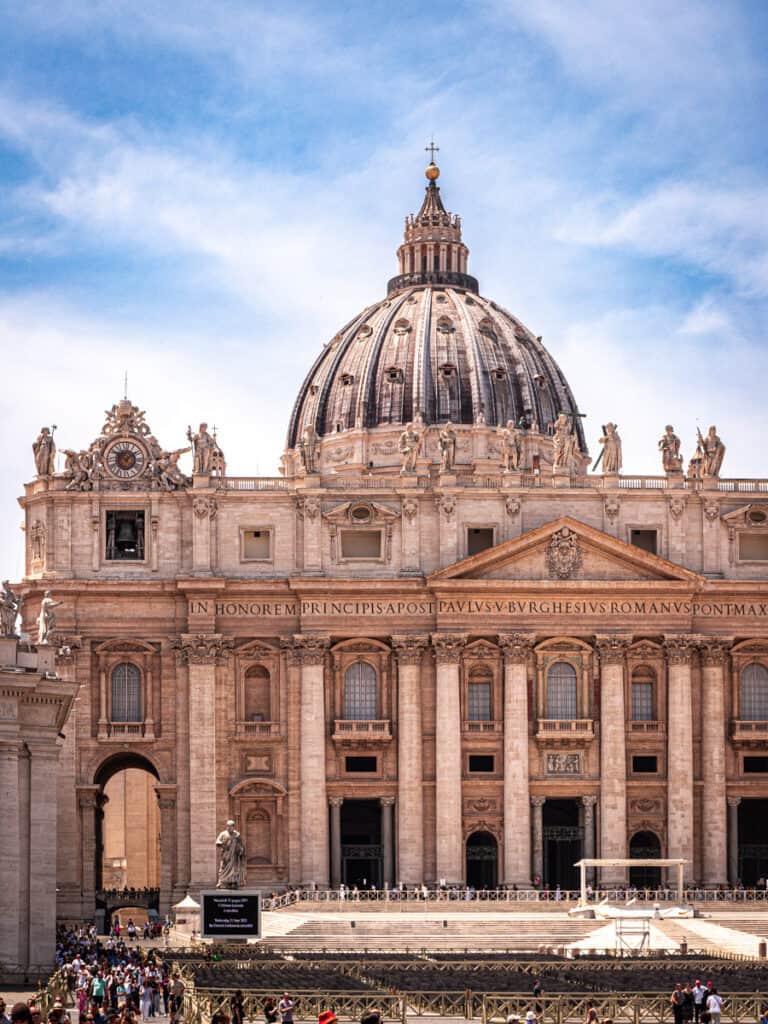
If you’re short on time and want to know what we consider to be the best and most unmissable things to do in Rome, here are our best of Rome experiences…
- BEST TOUR: Our street food and history tour
- BECAUSE you can’t come to Rome and NOT do it: Visit the Vatican
- MOST SURPRISING ATTRACTION: The Pantheon
- WISH We DIDN’T MISS: Colosseum guided tour
- BEST GELATO: Gelateria del Teatro
- BEST RESTAURANT: Mama Eats in Trastevere
- BEST NEIGHBORHOOD: Trastevere
- BEST QUIET ESCAPE: Villa Borghese Gardens
Where to Stay in Rome
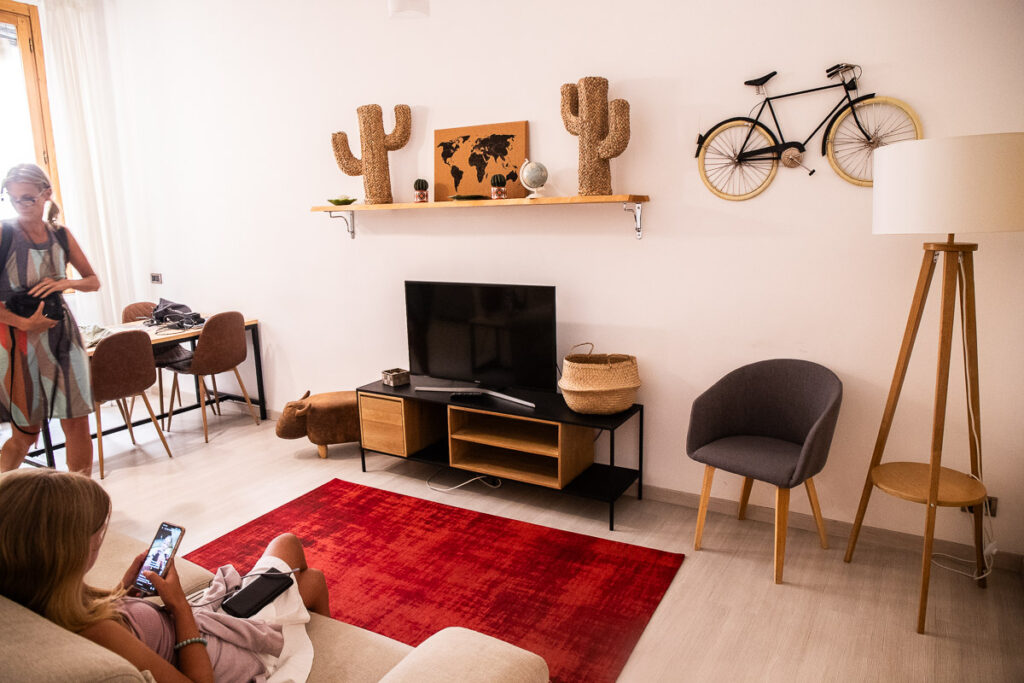
As mentioned we stayed in Trastevere and can highly recommend basing yourself in this neighborhood.
Final Thoughts On Things To Know Before Traveling To Rome
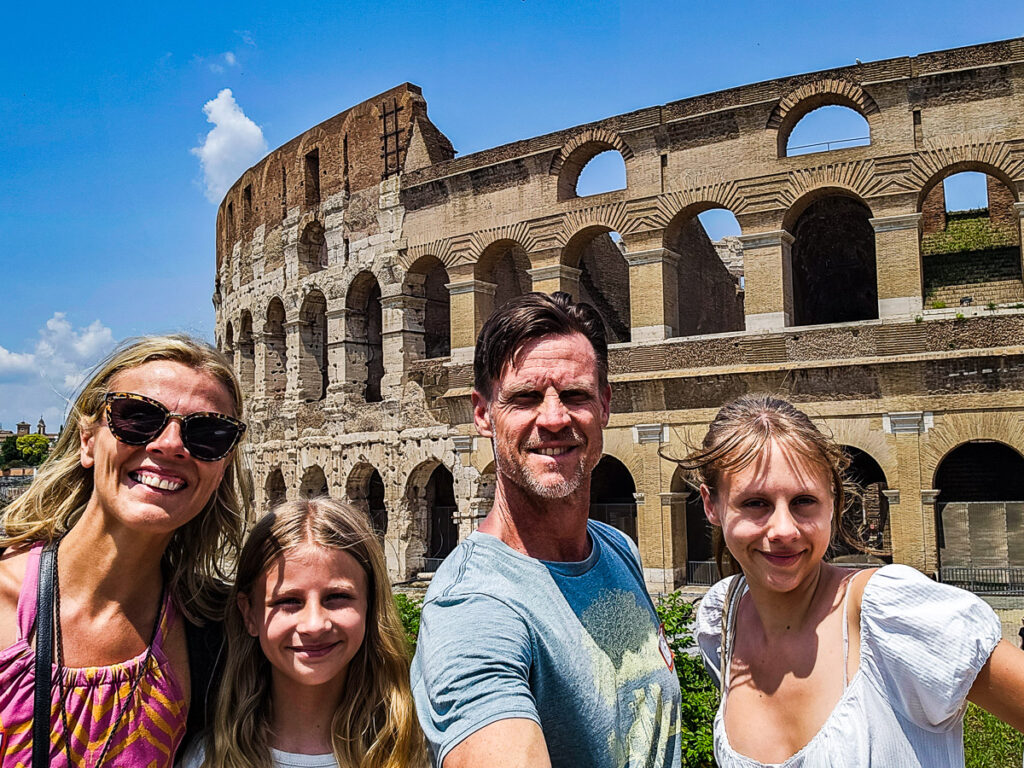
So there you have it, these are some of the most important pieces of knowledge about the city’s culture, way of life, and attractions.
We advise that you plan your visit to Rome in advance and be sure to book popular attractions ahead of time to avoid long queues and make the most of your time.
Rome offers a wealth of historical and cultural experiences and we can see why it receives so many visitors a year.
We hope that arming yourself with these tips will help you make the most out of your visit. Drop any of your tips in the comments below.
Visiting Other Places in Italy?
You may be interested in these guides:
[ad_2]
Source link
